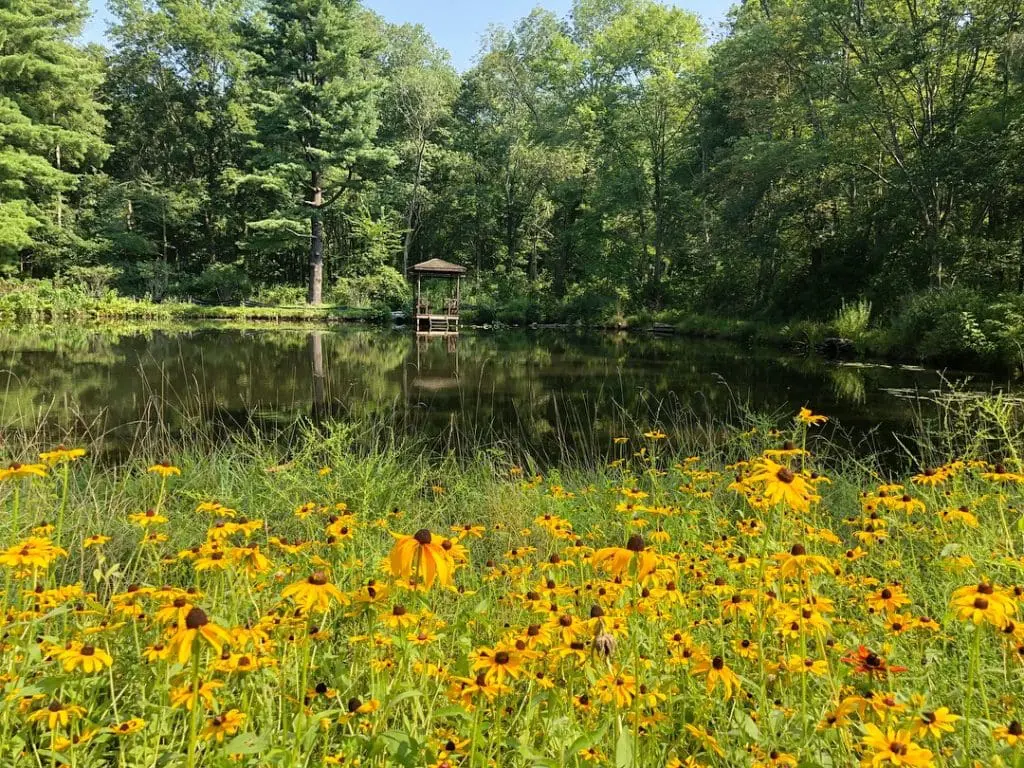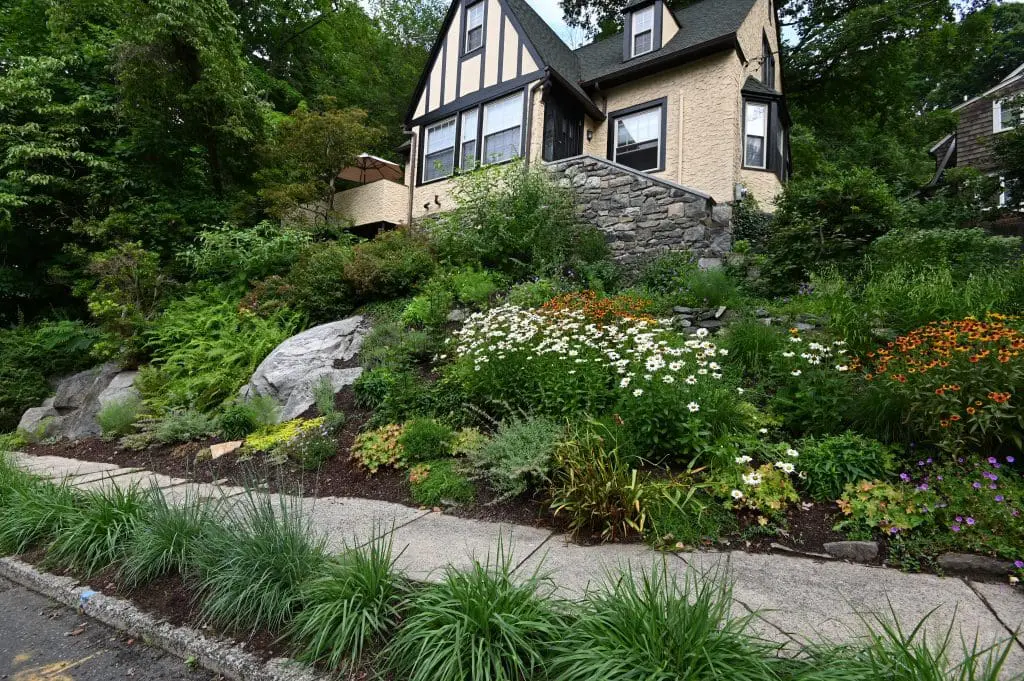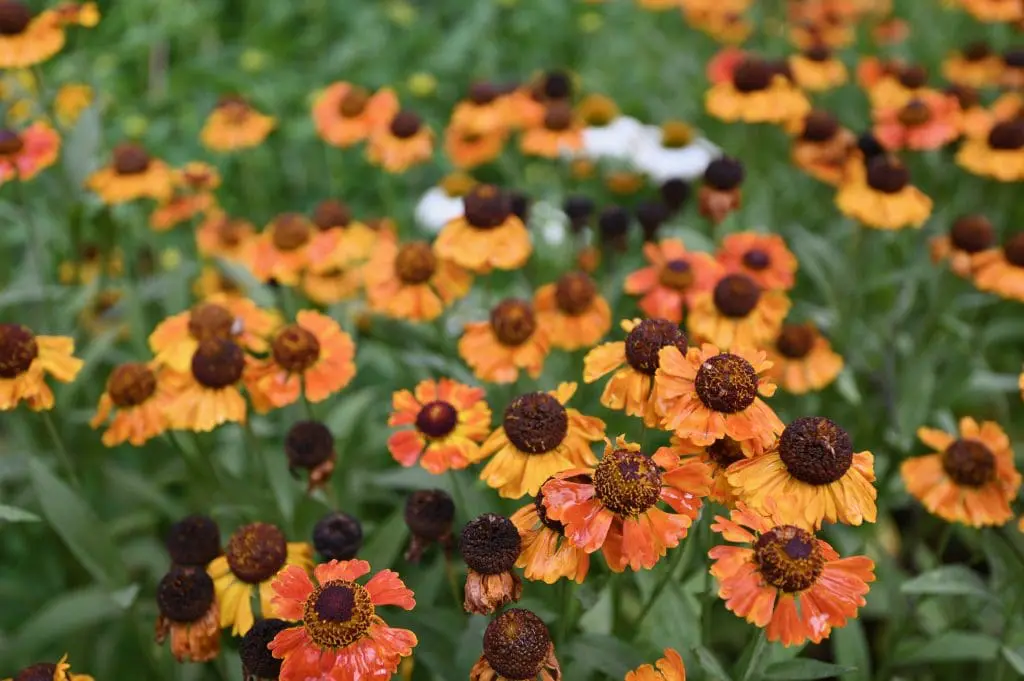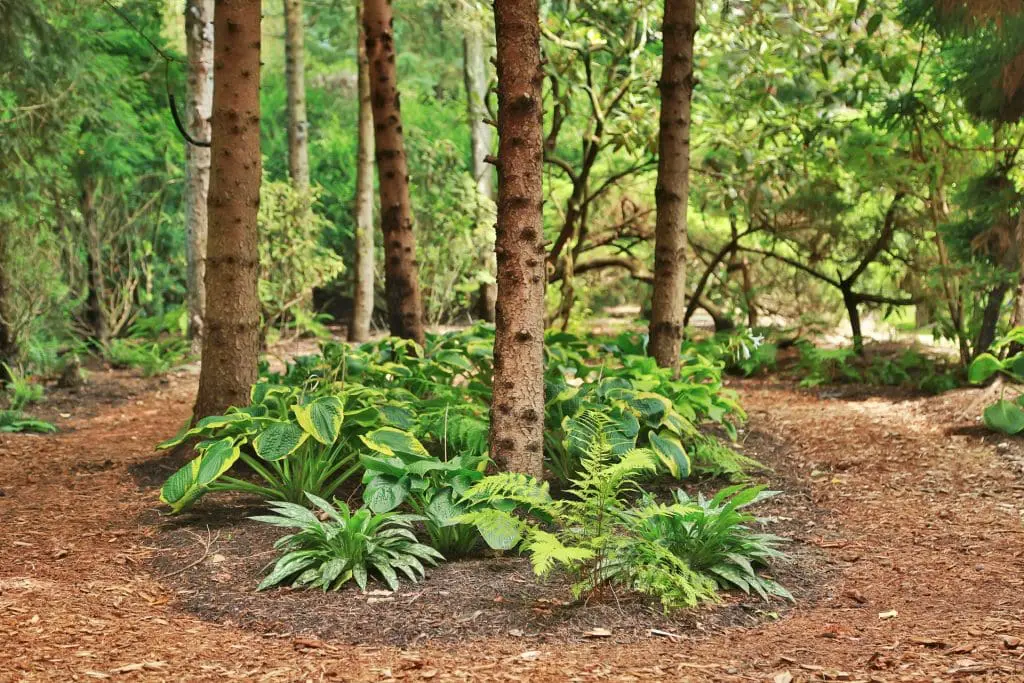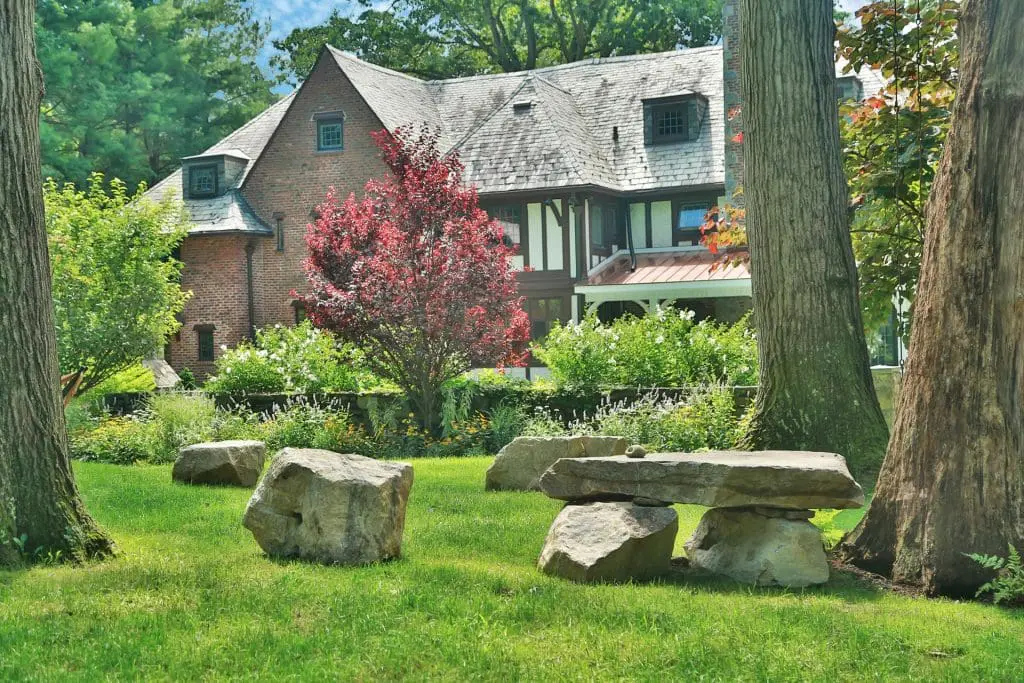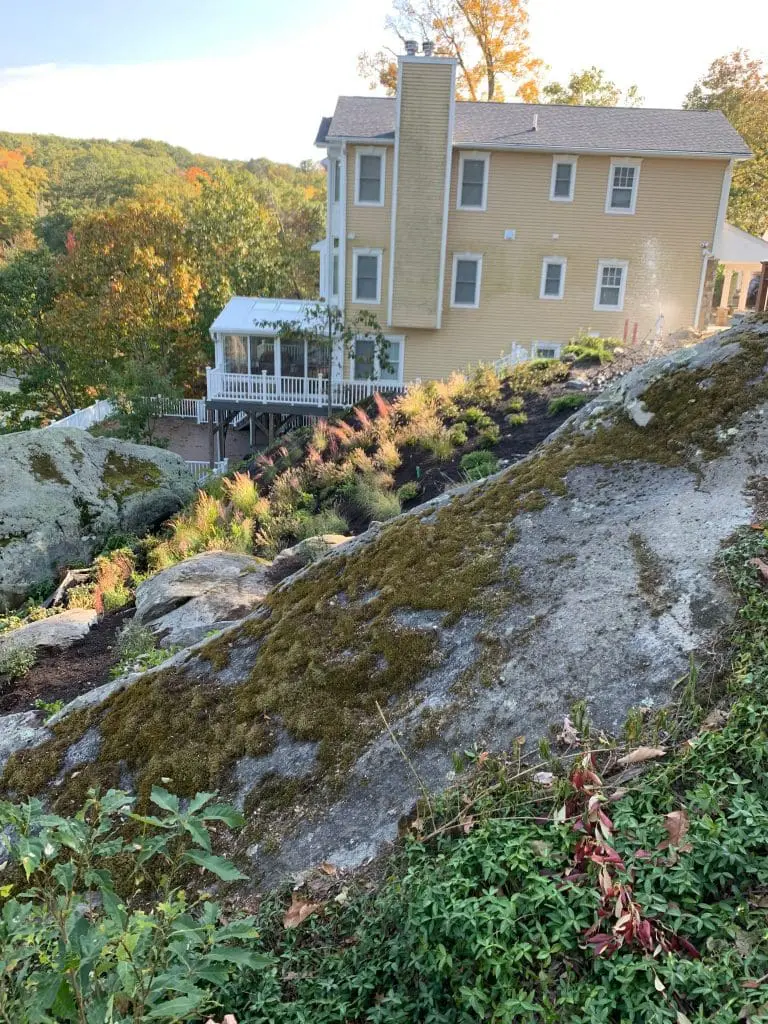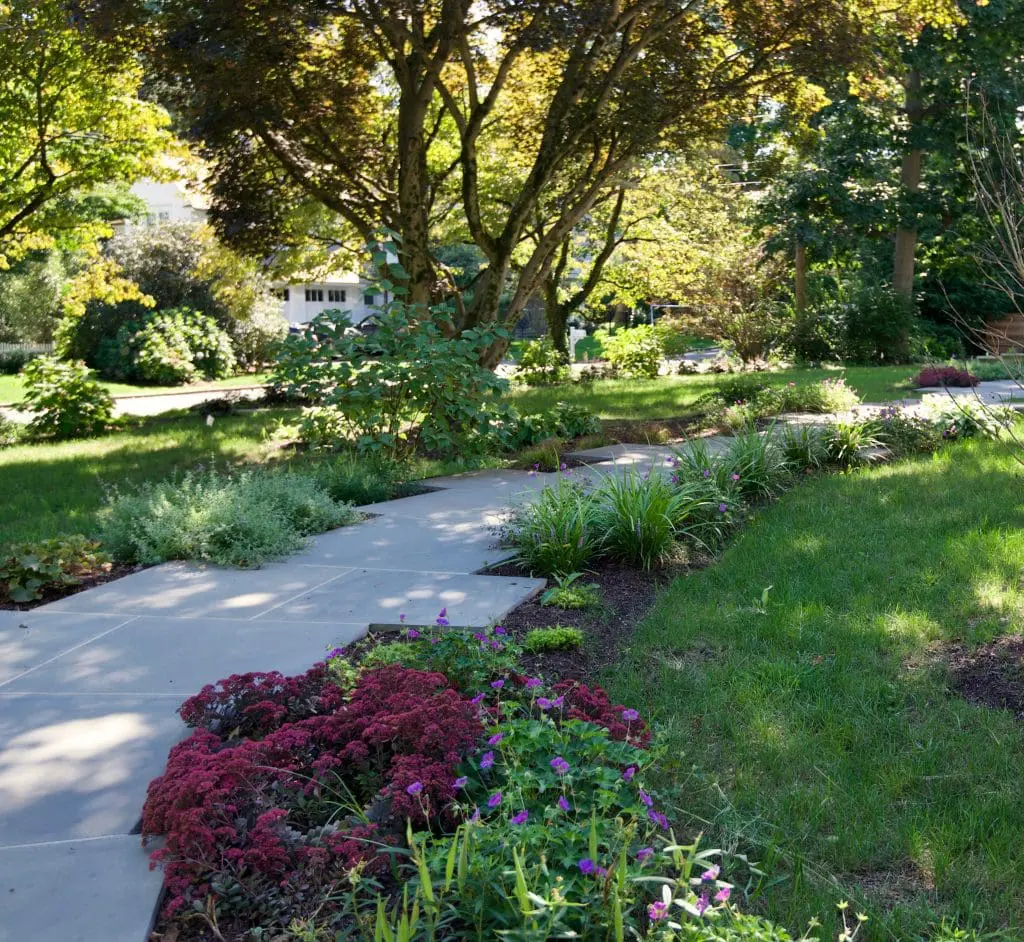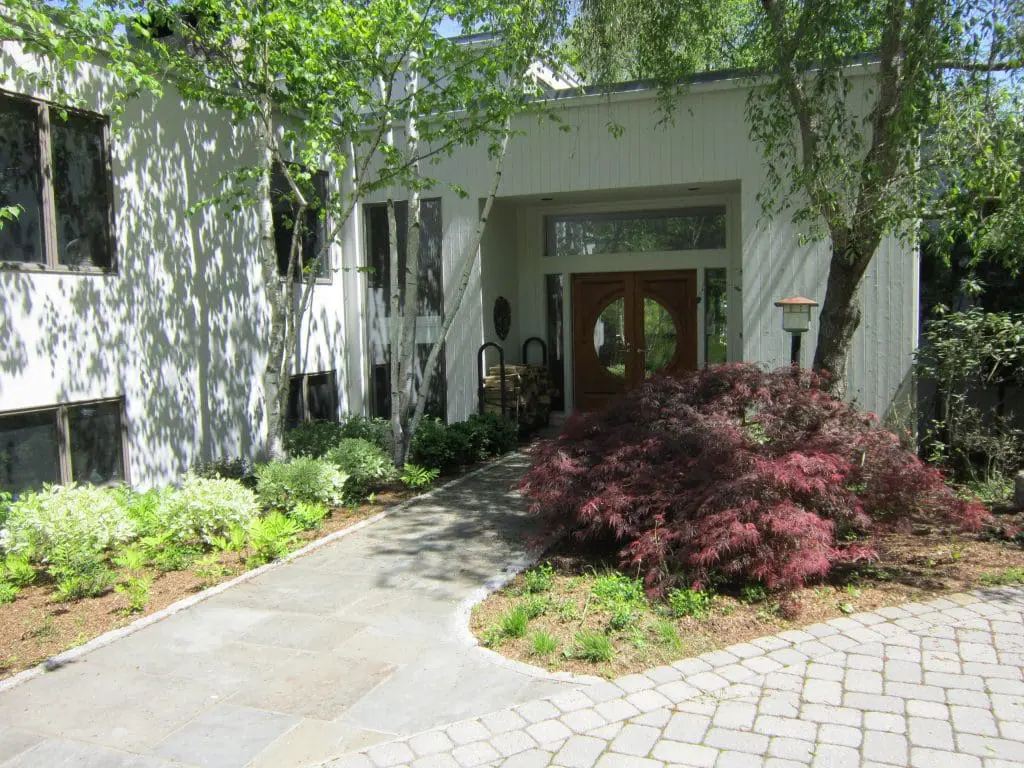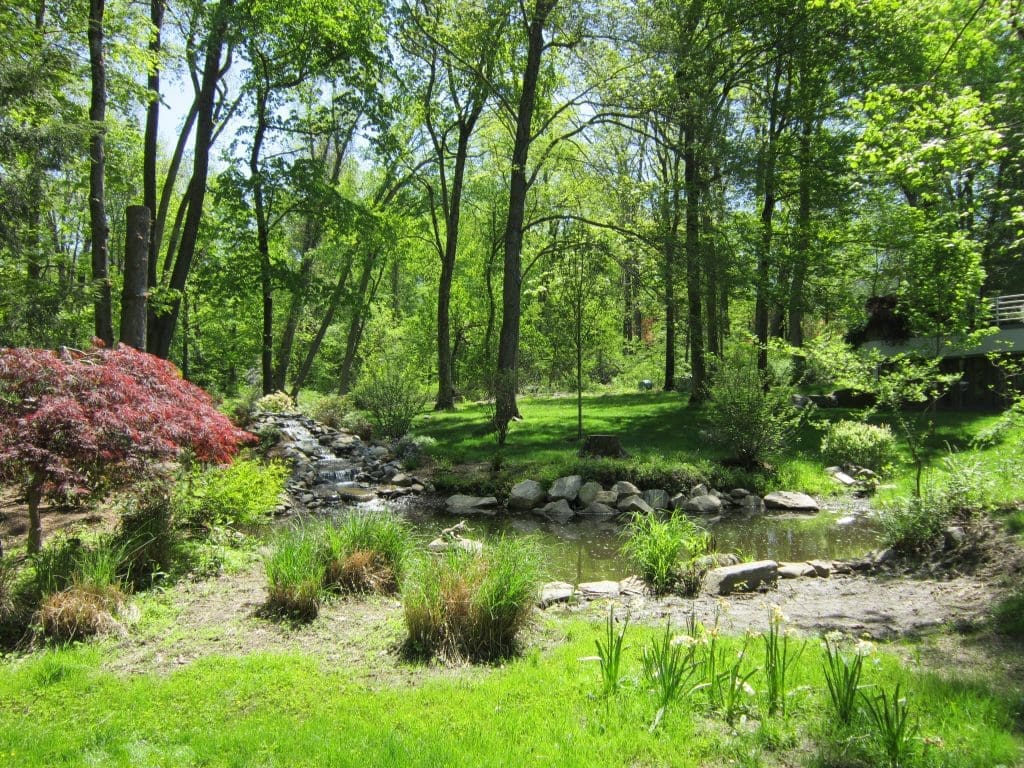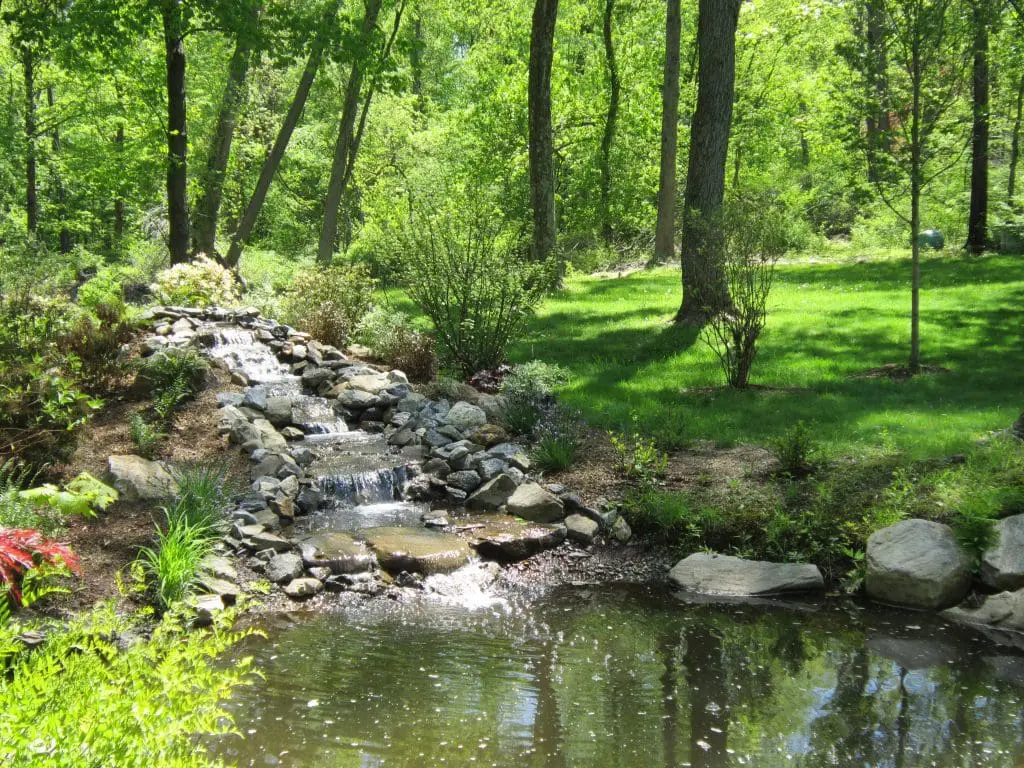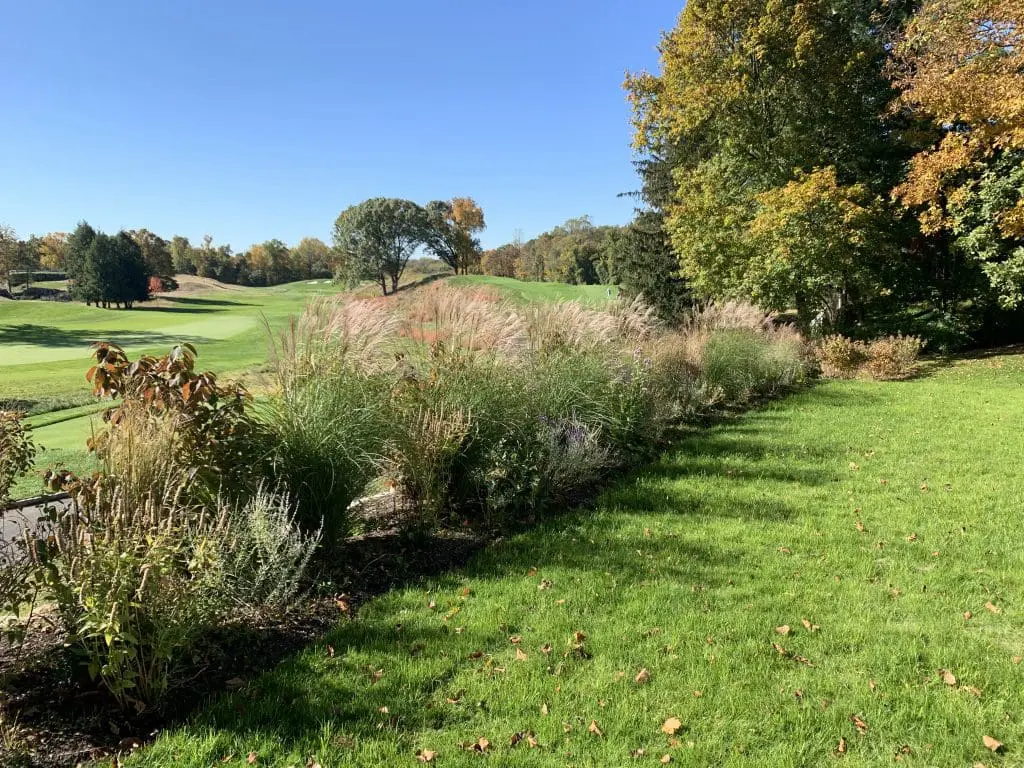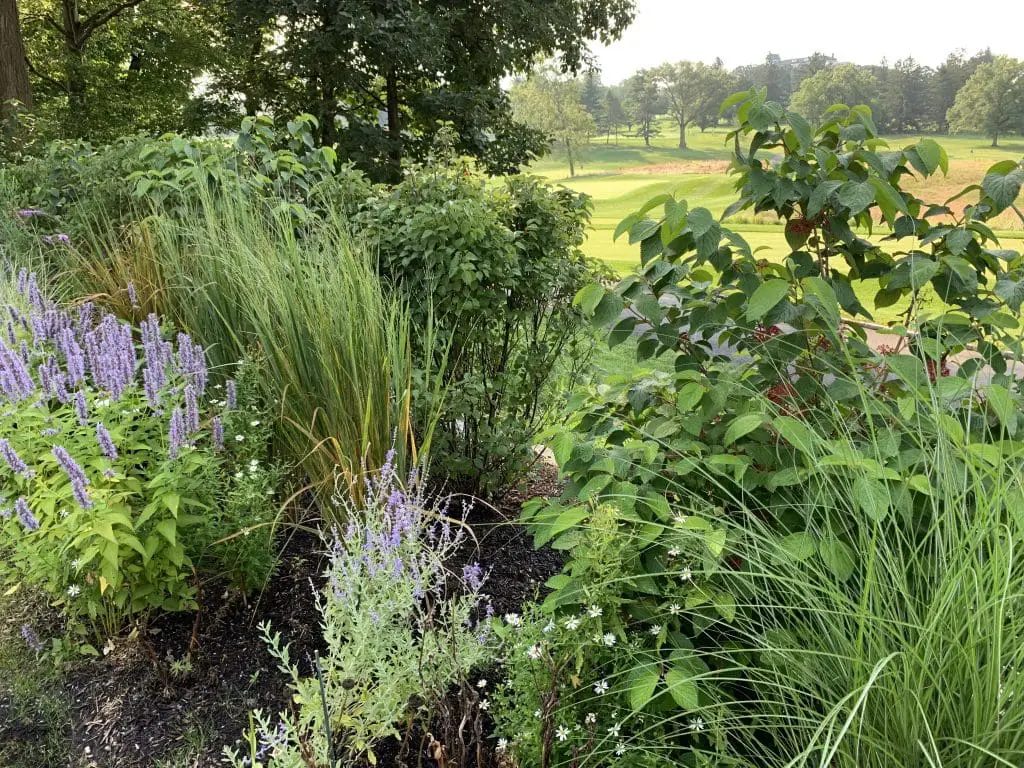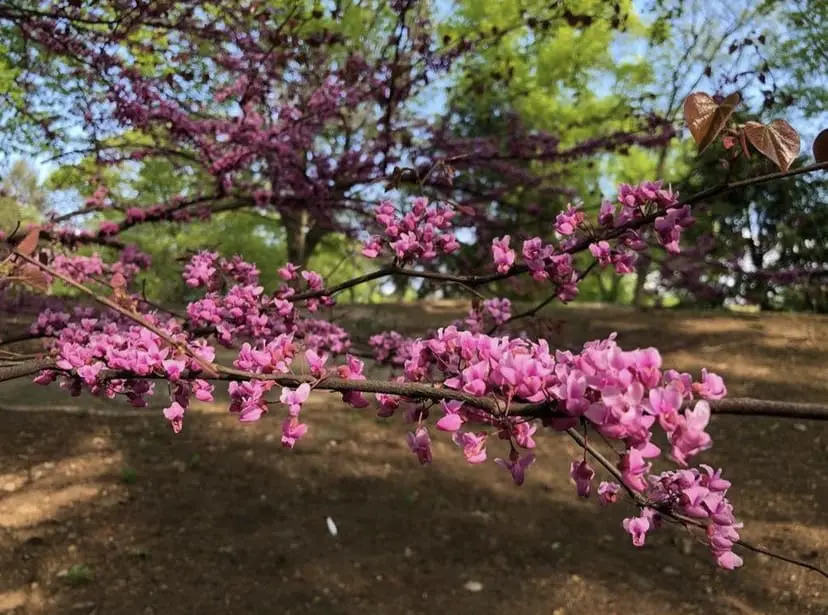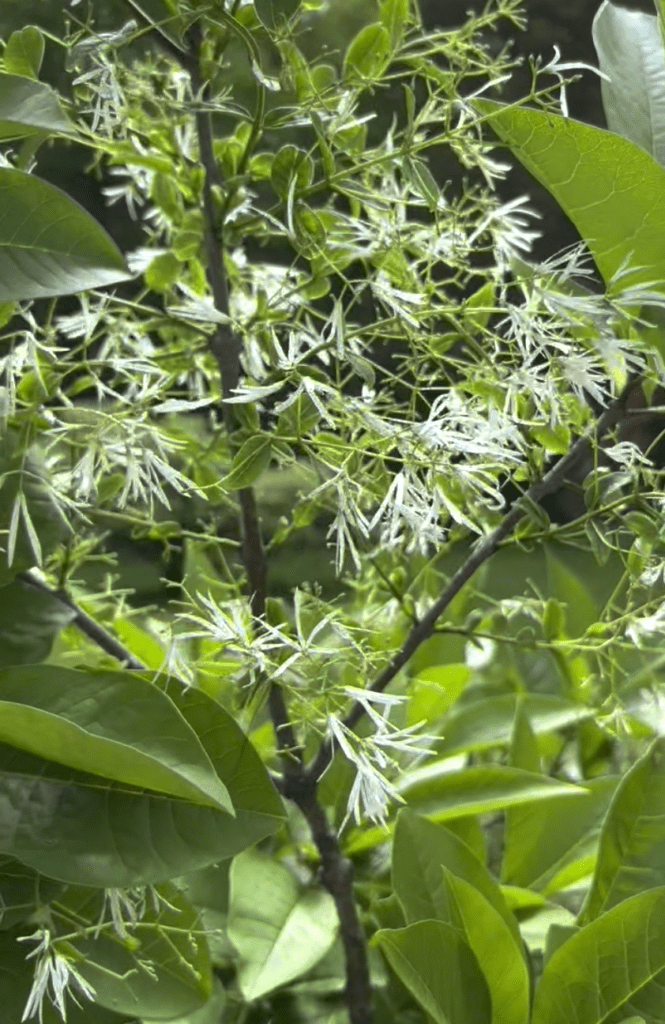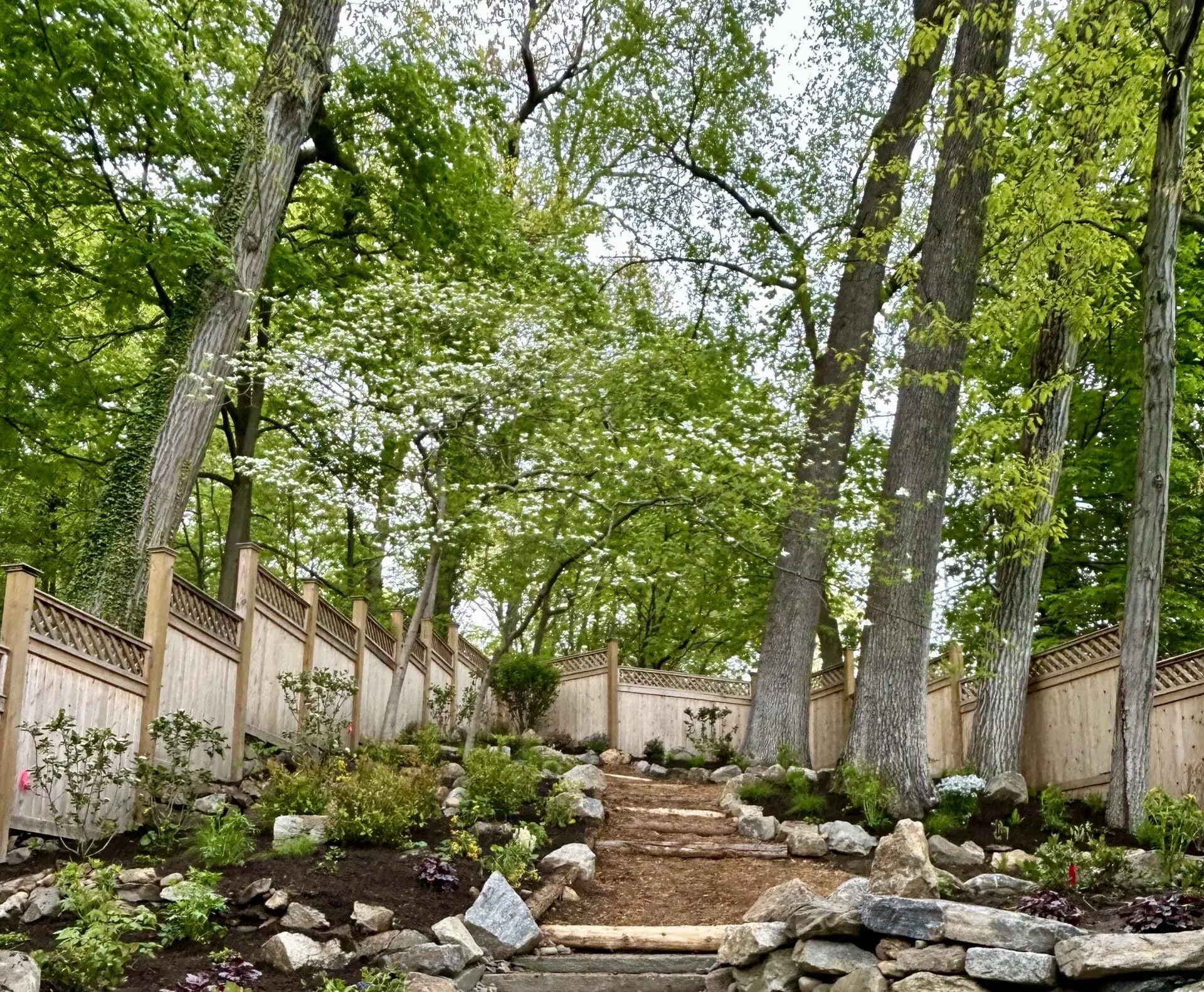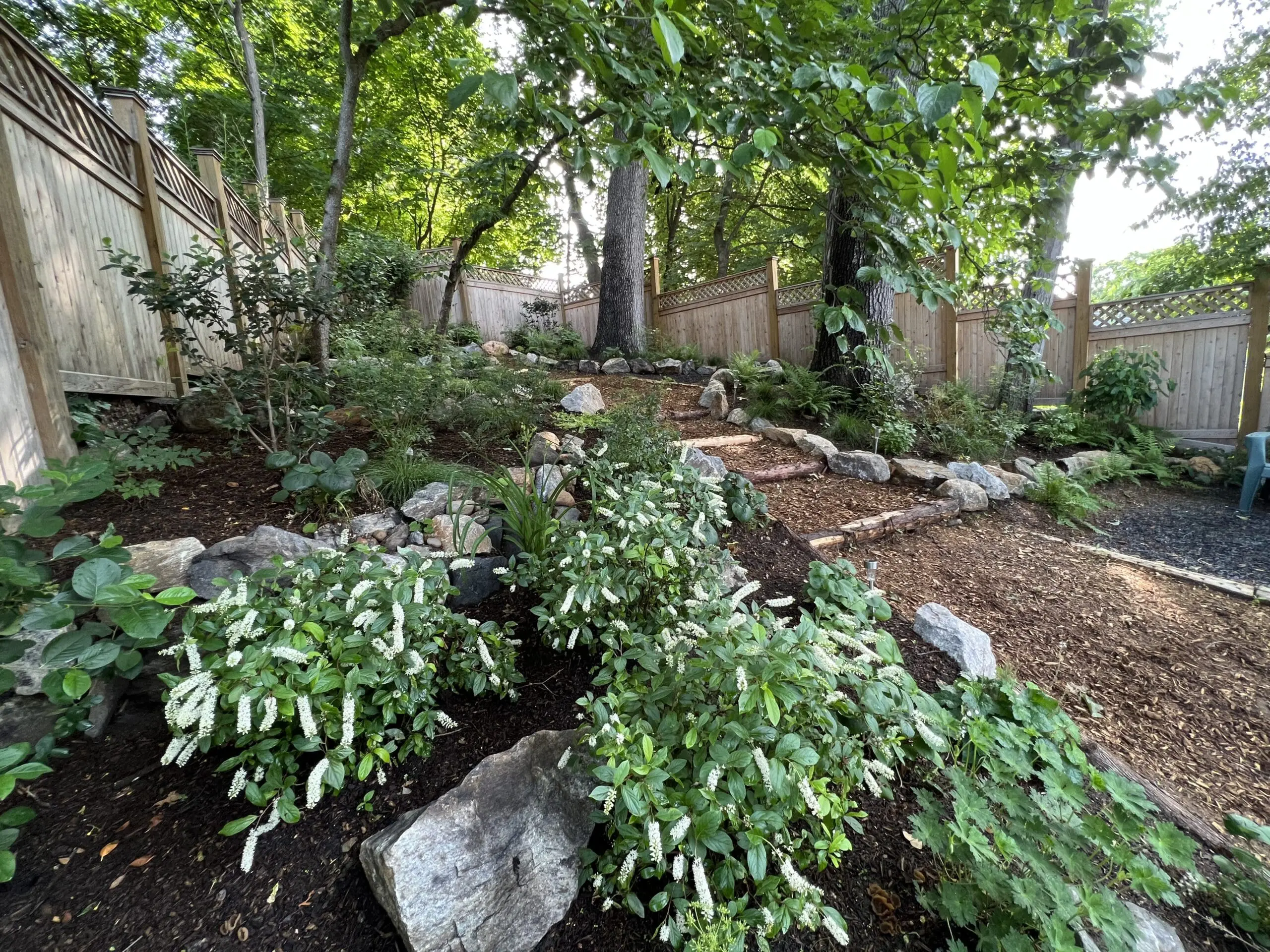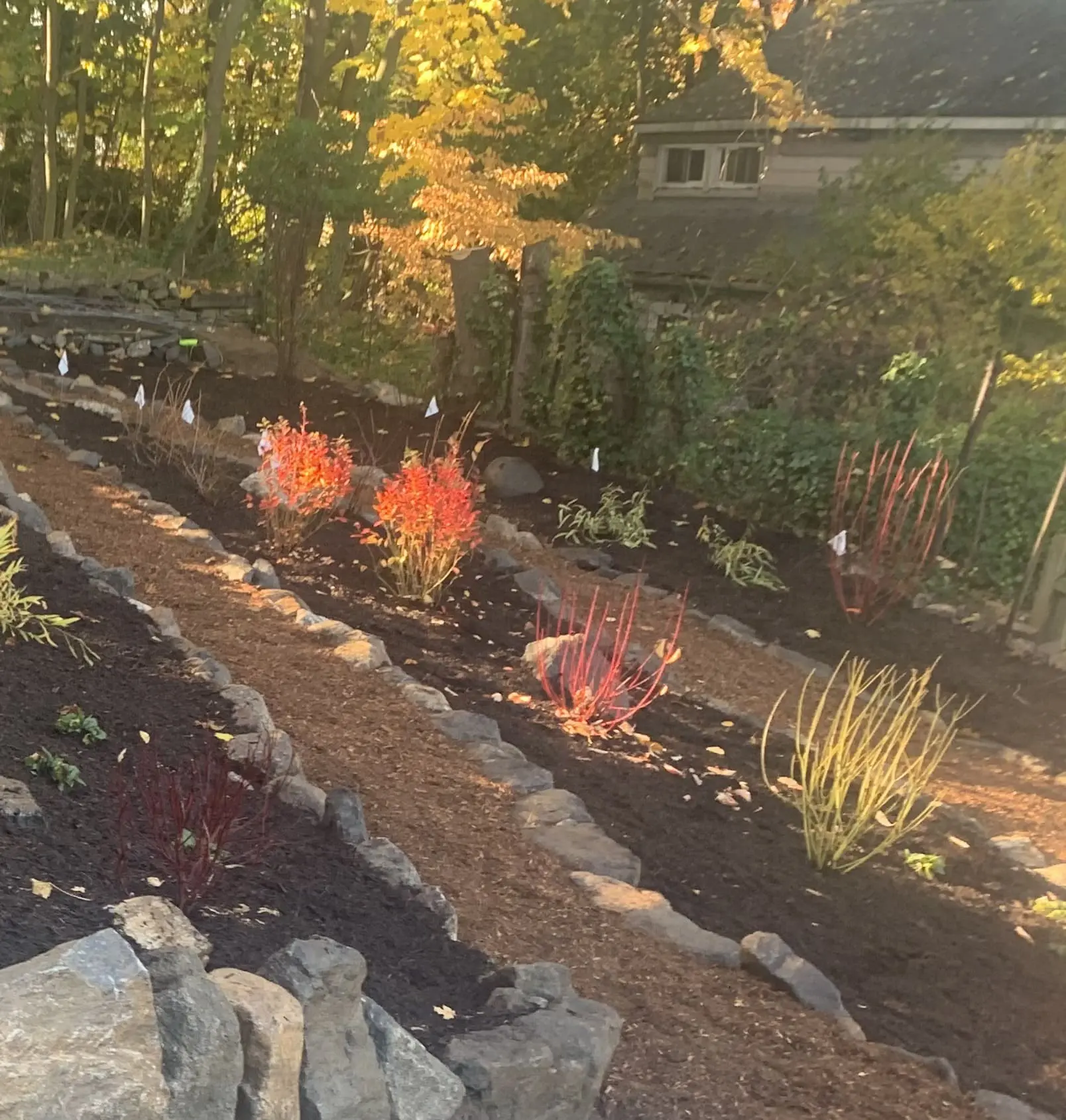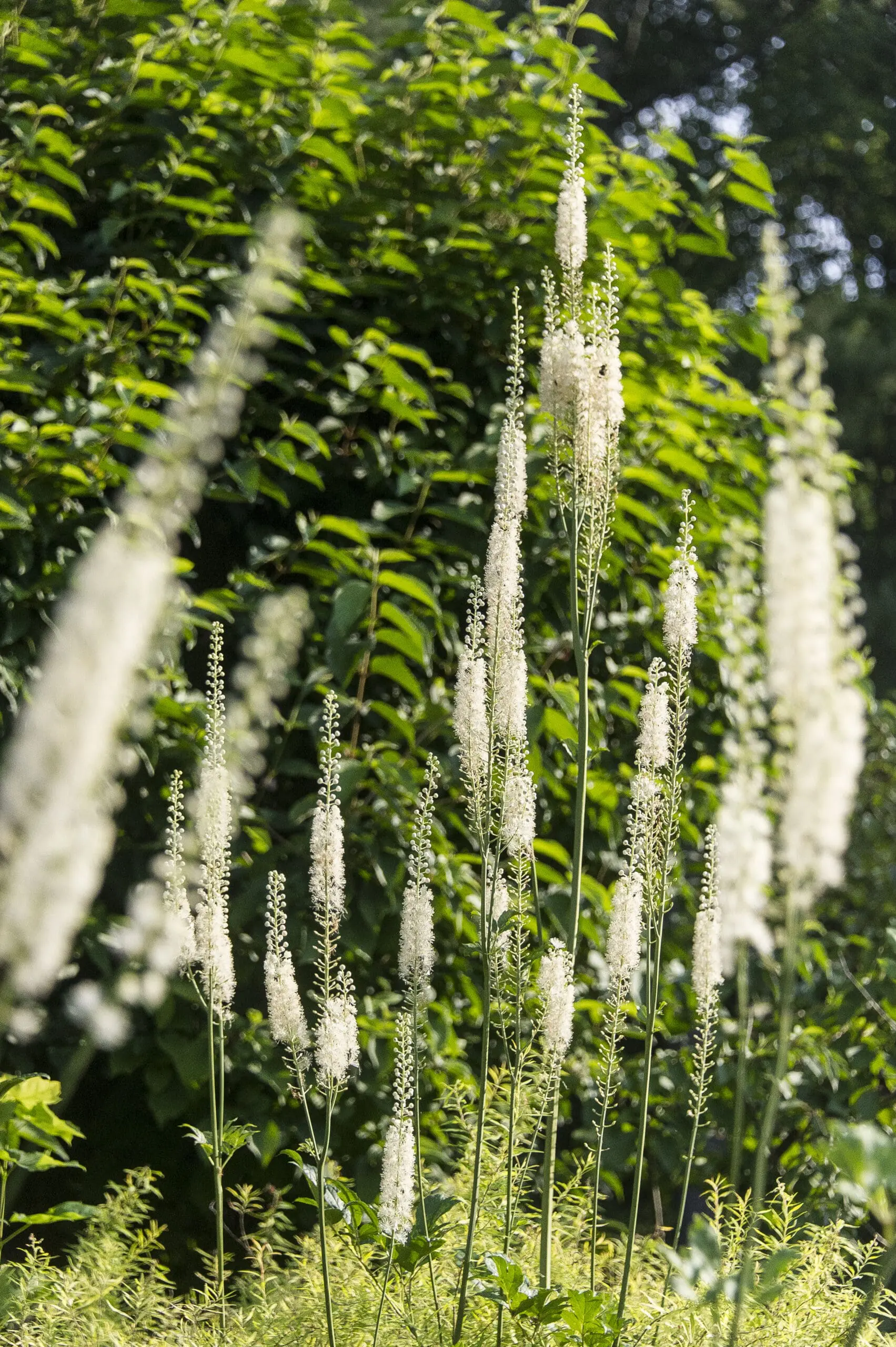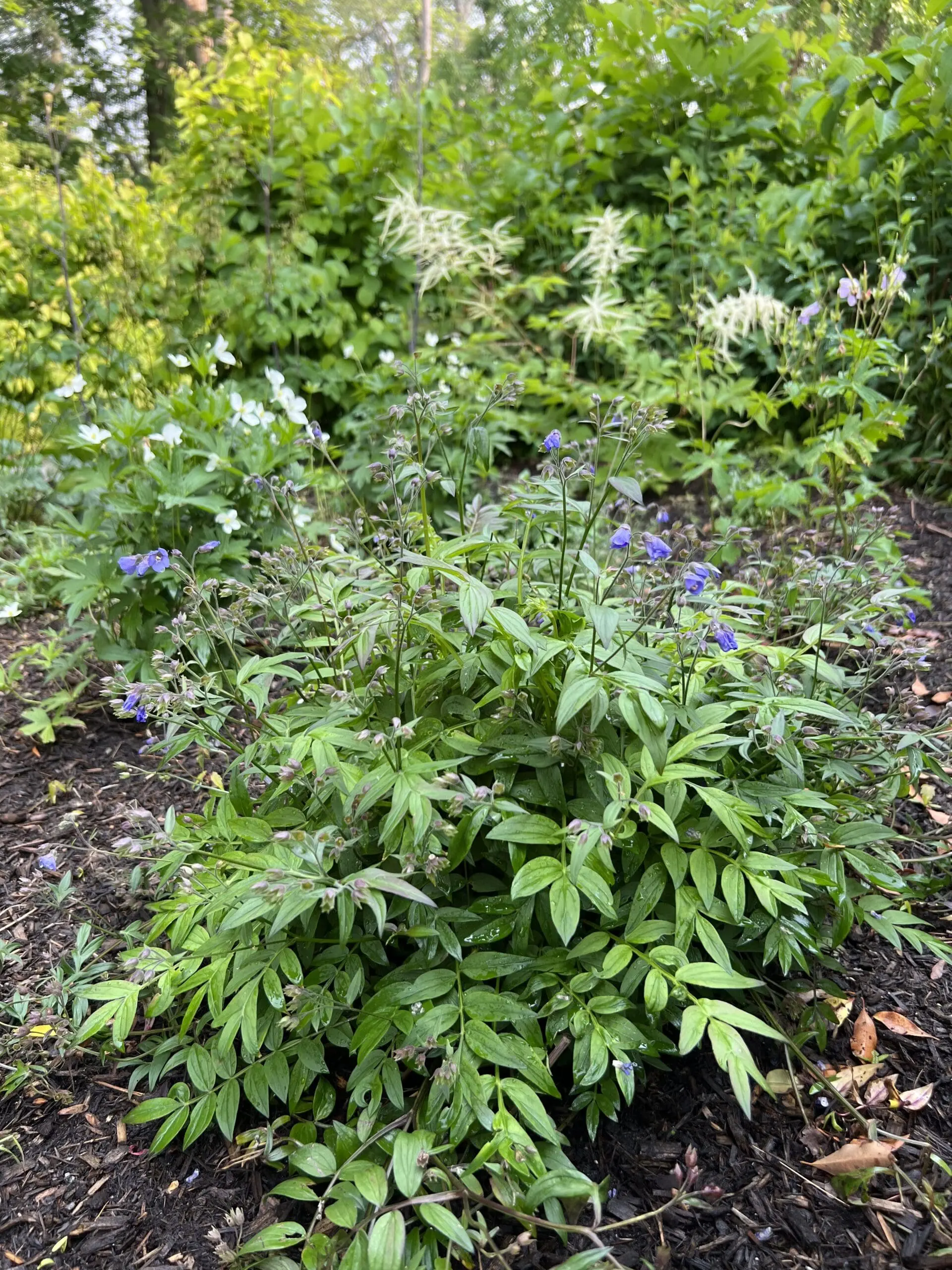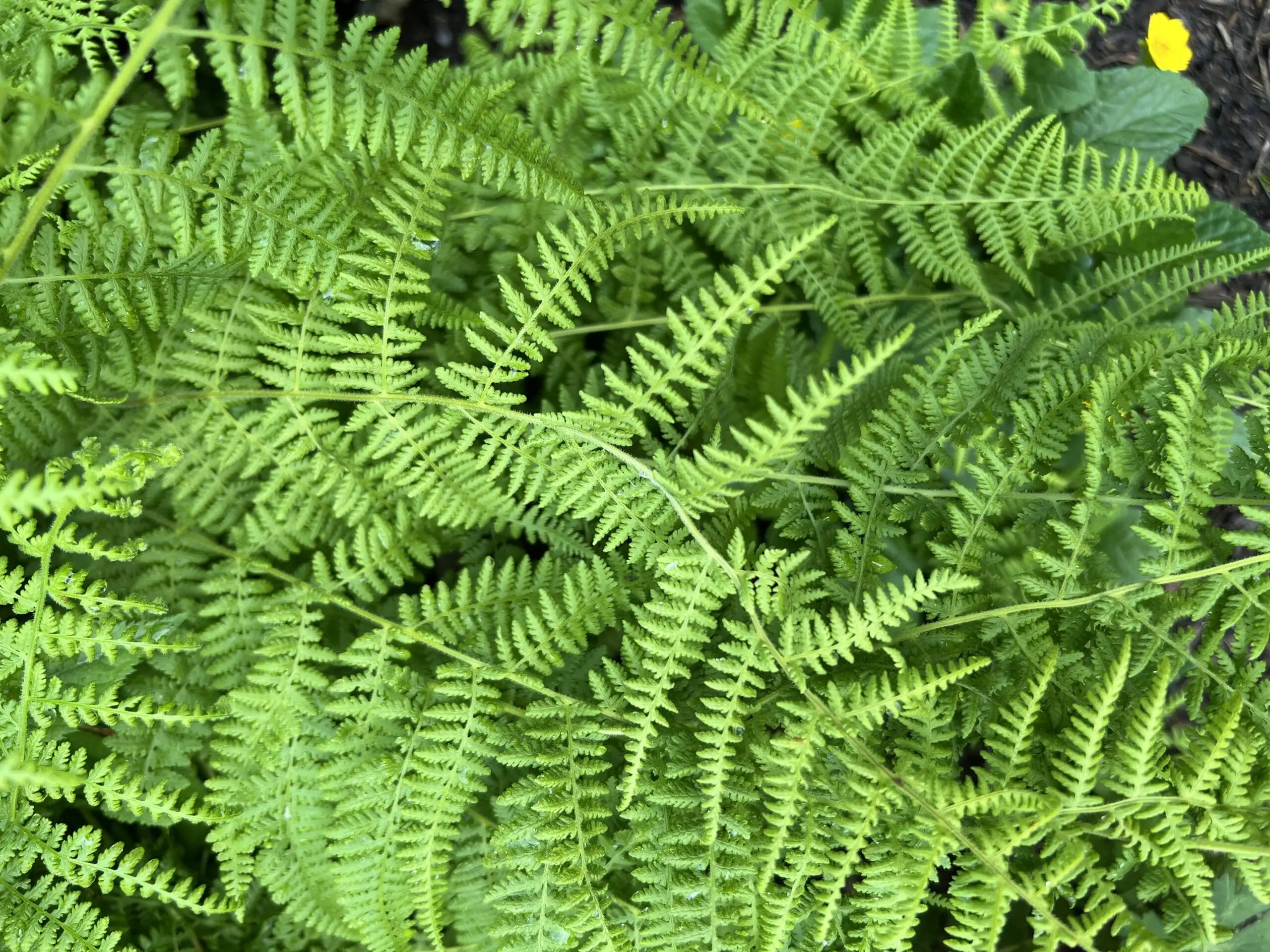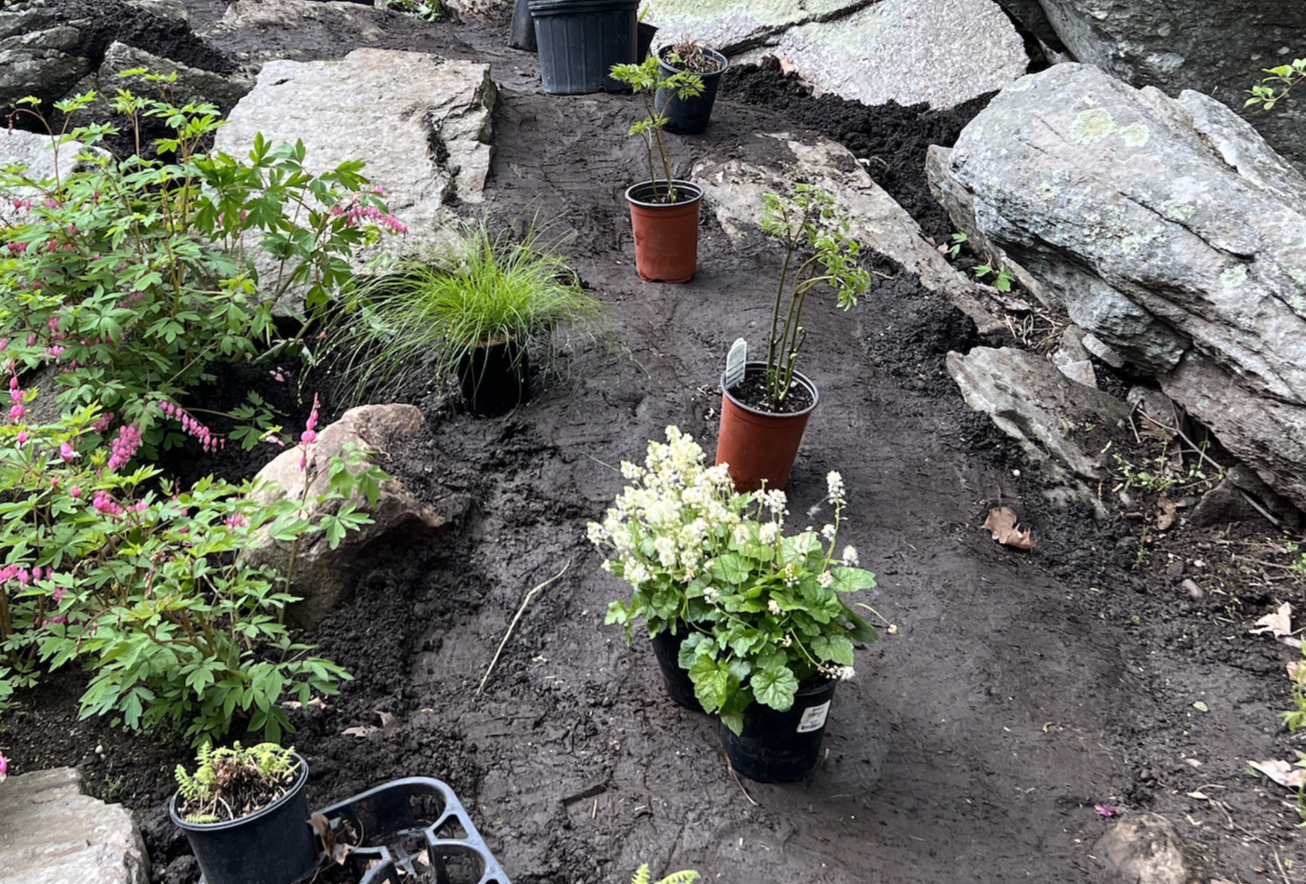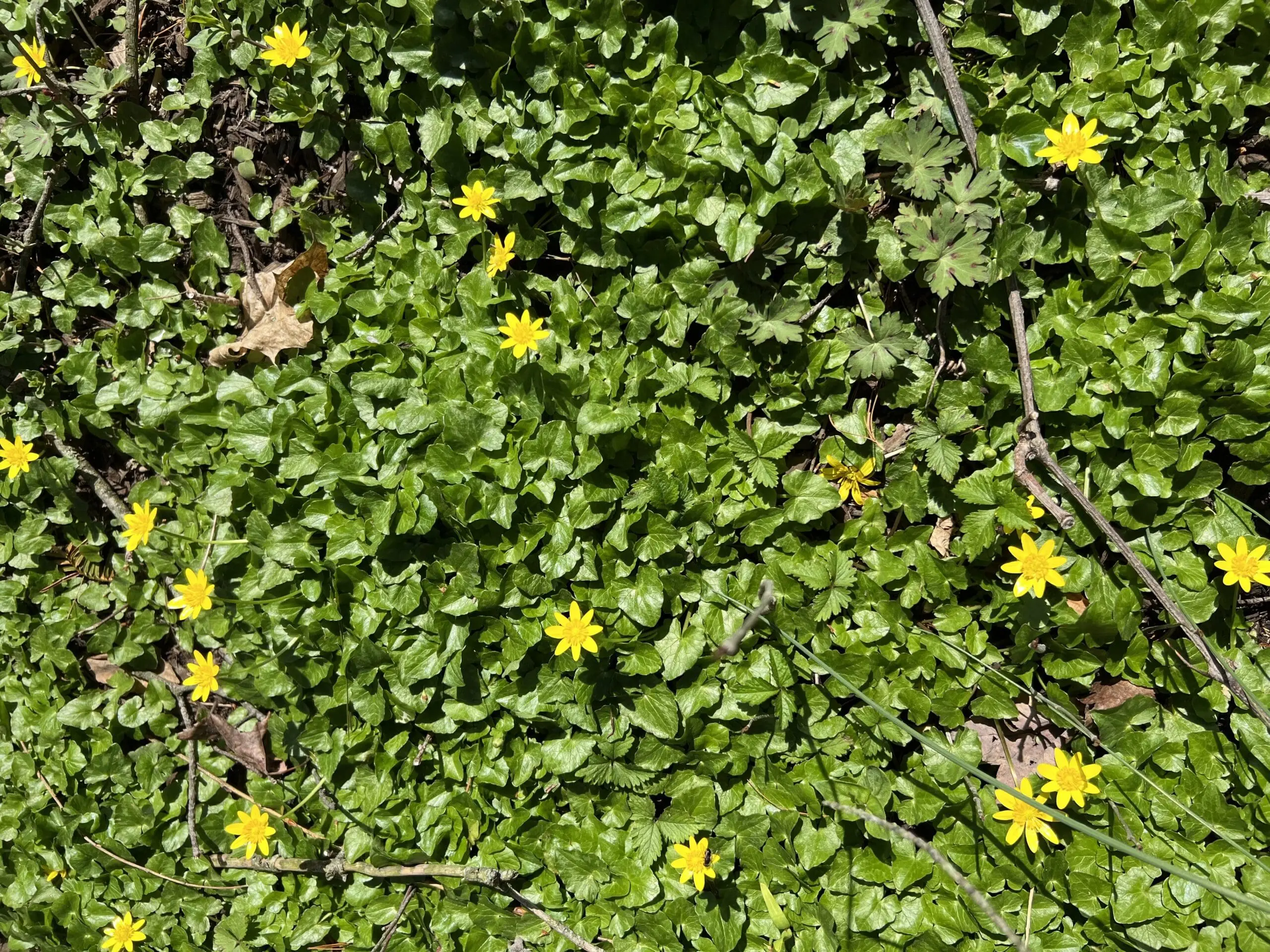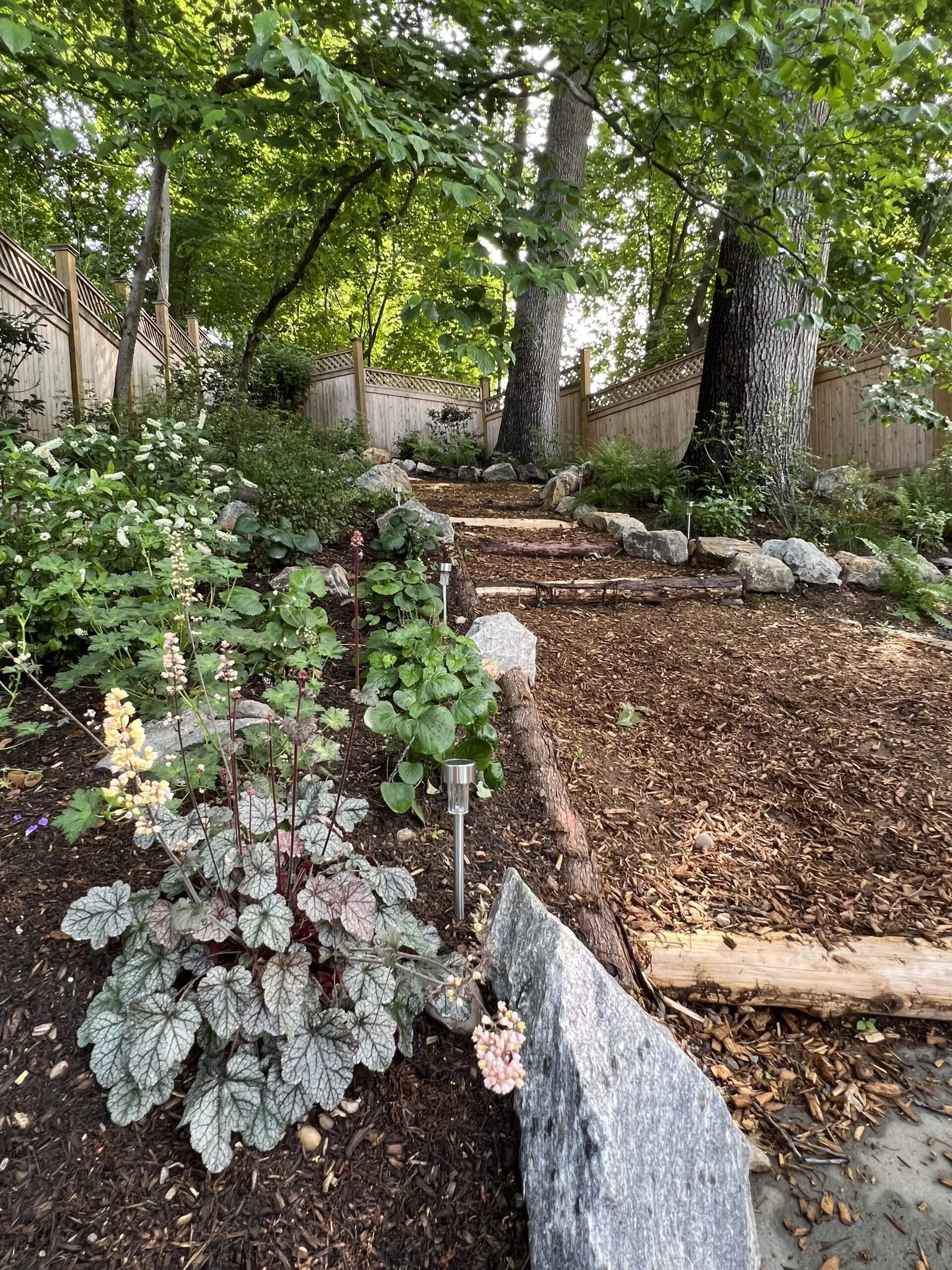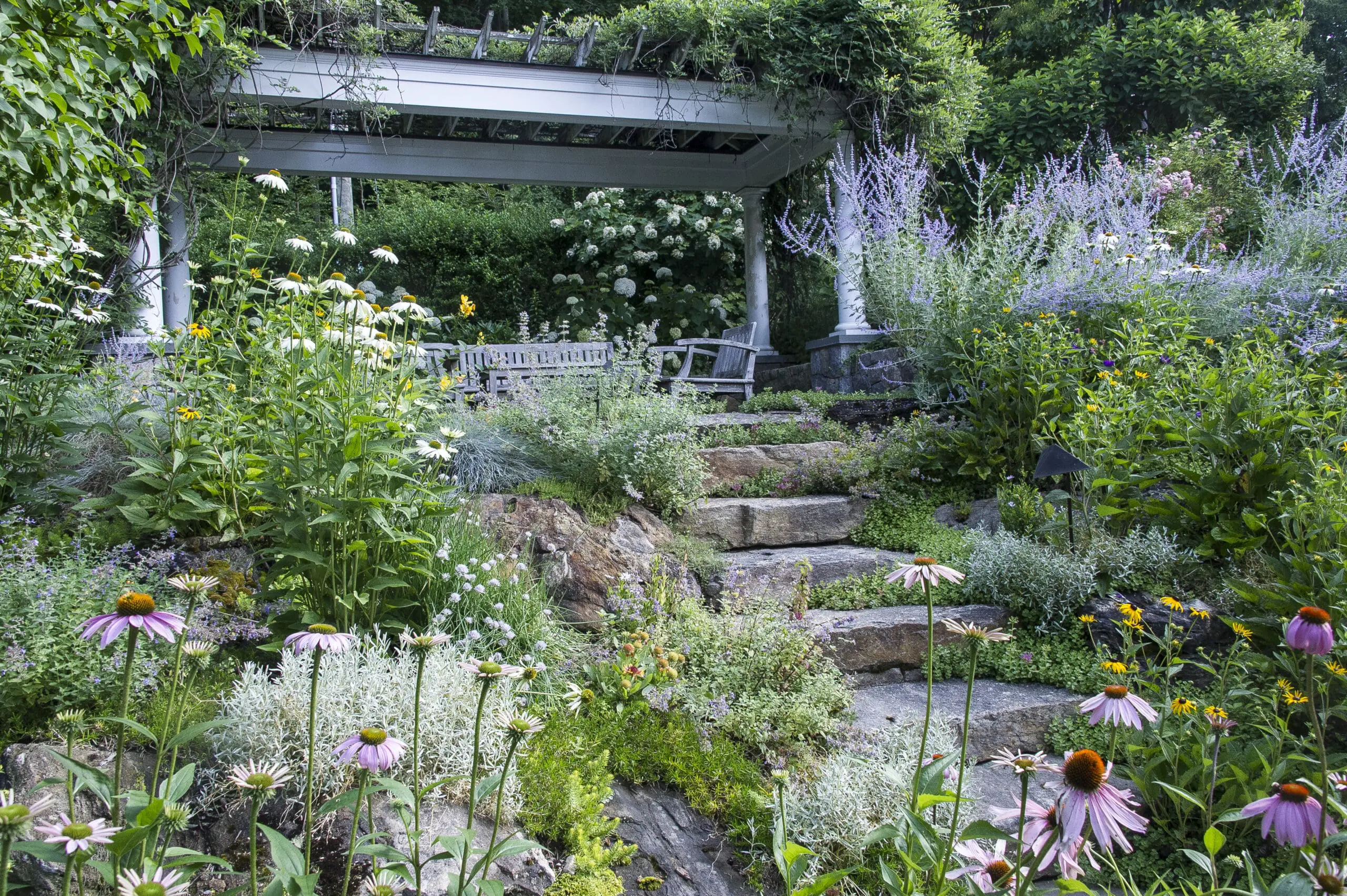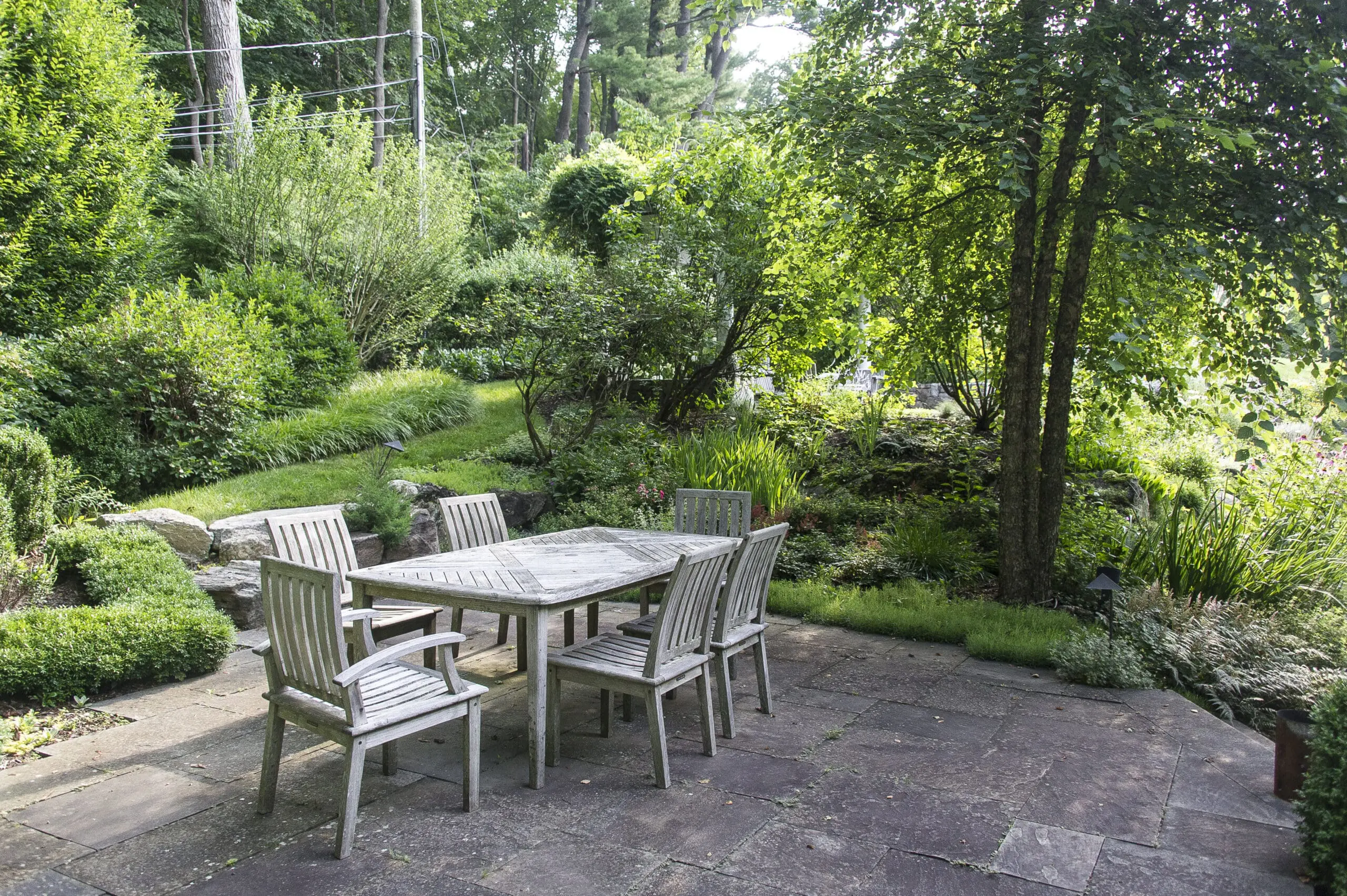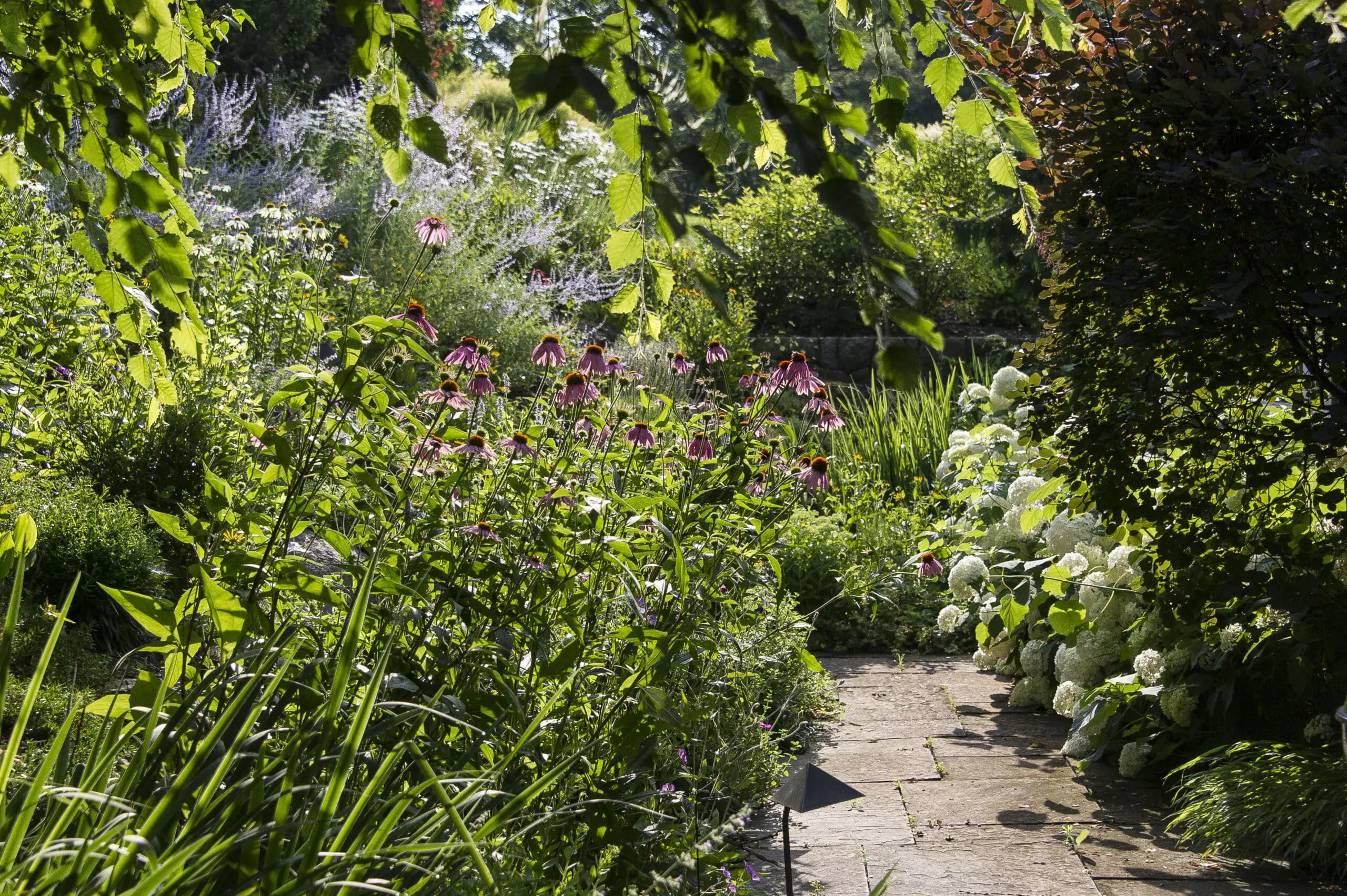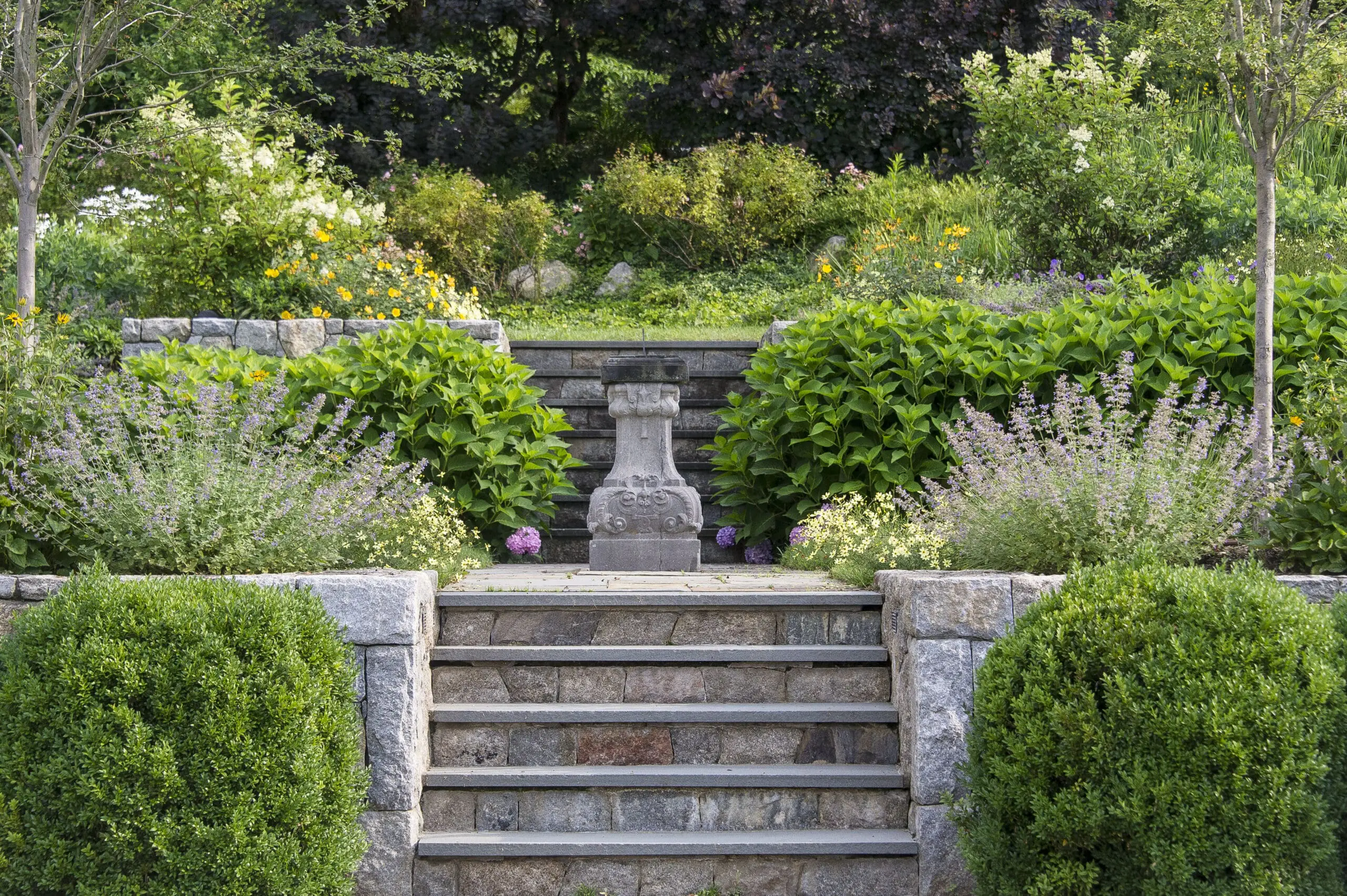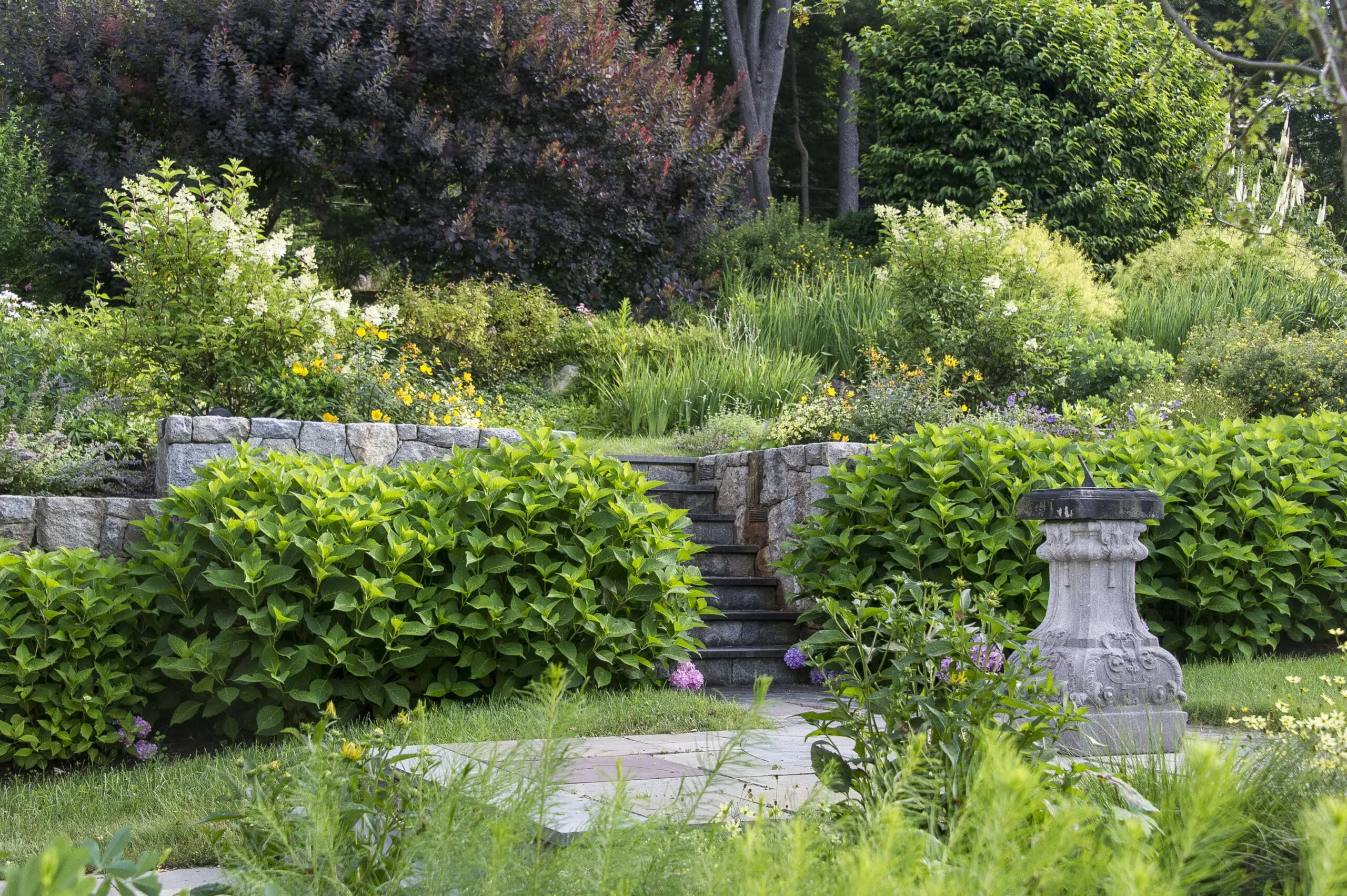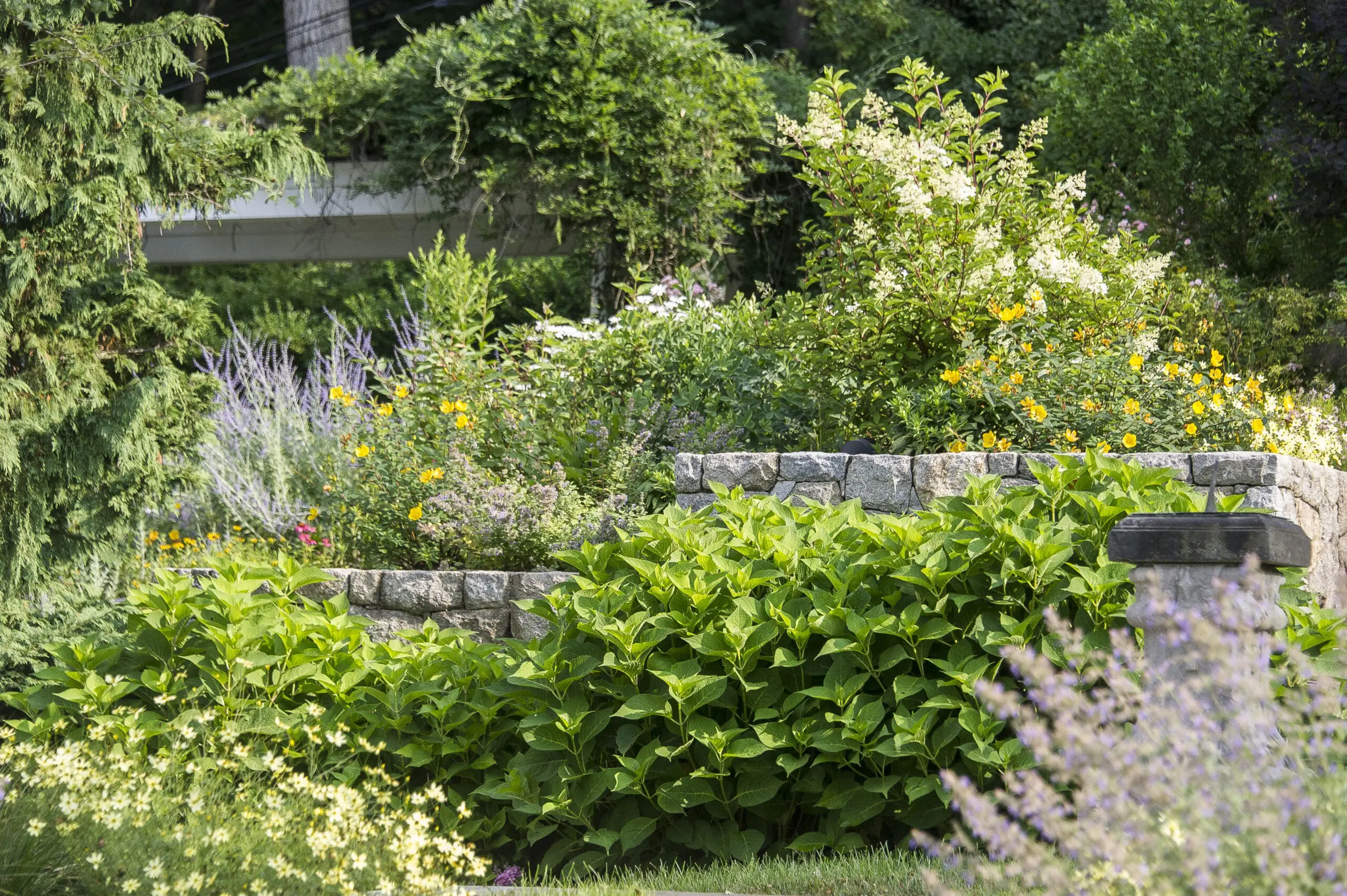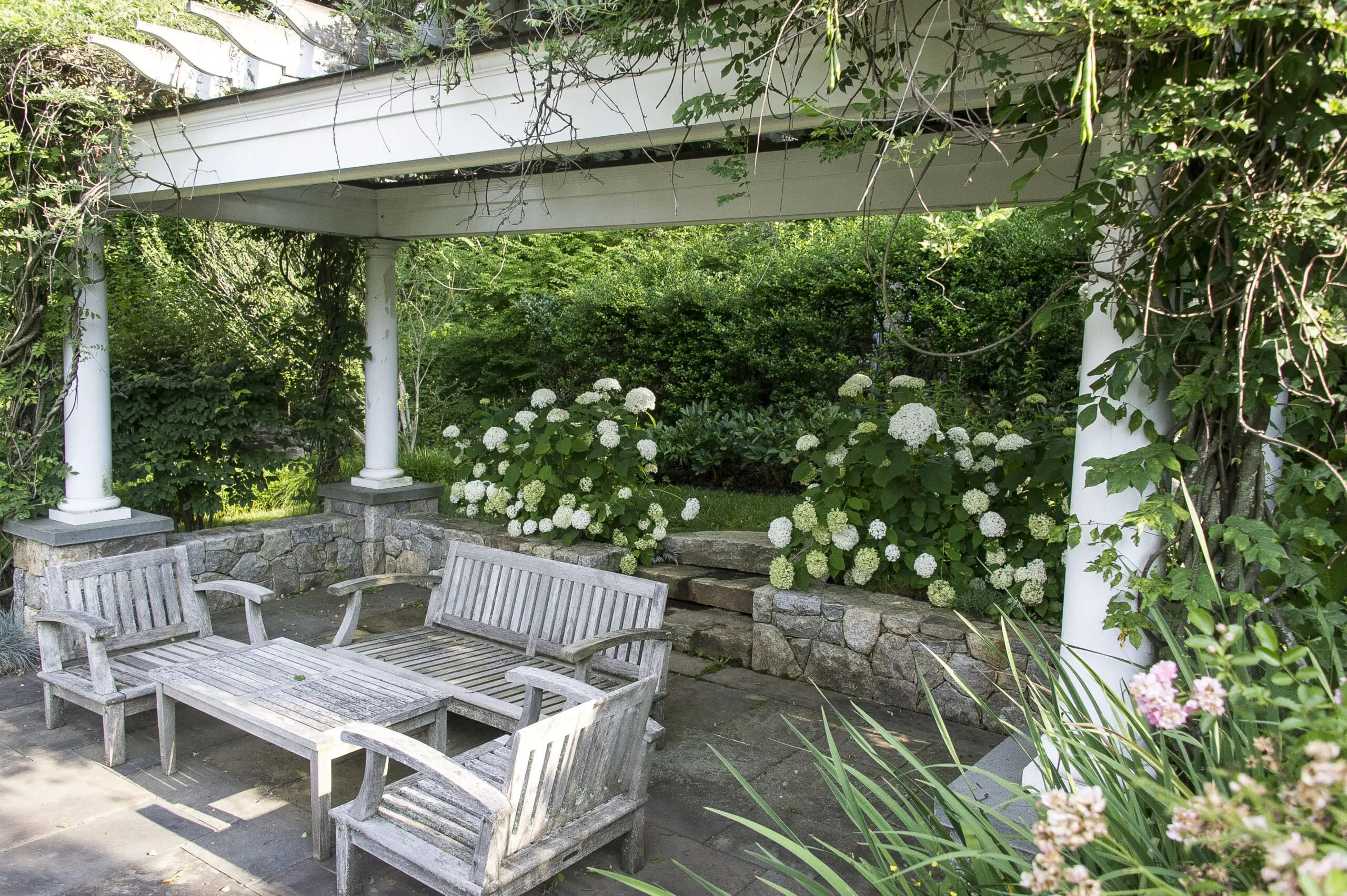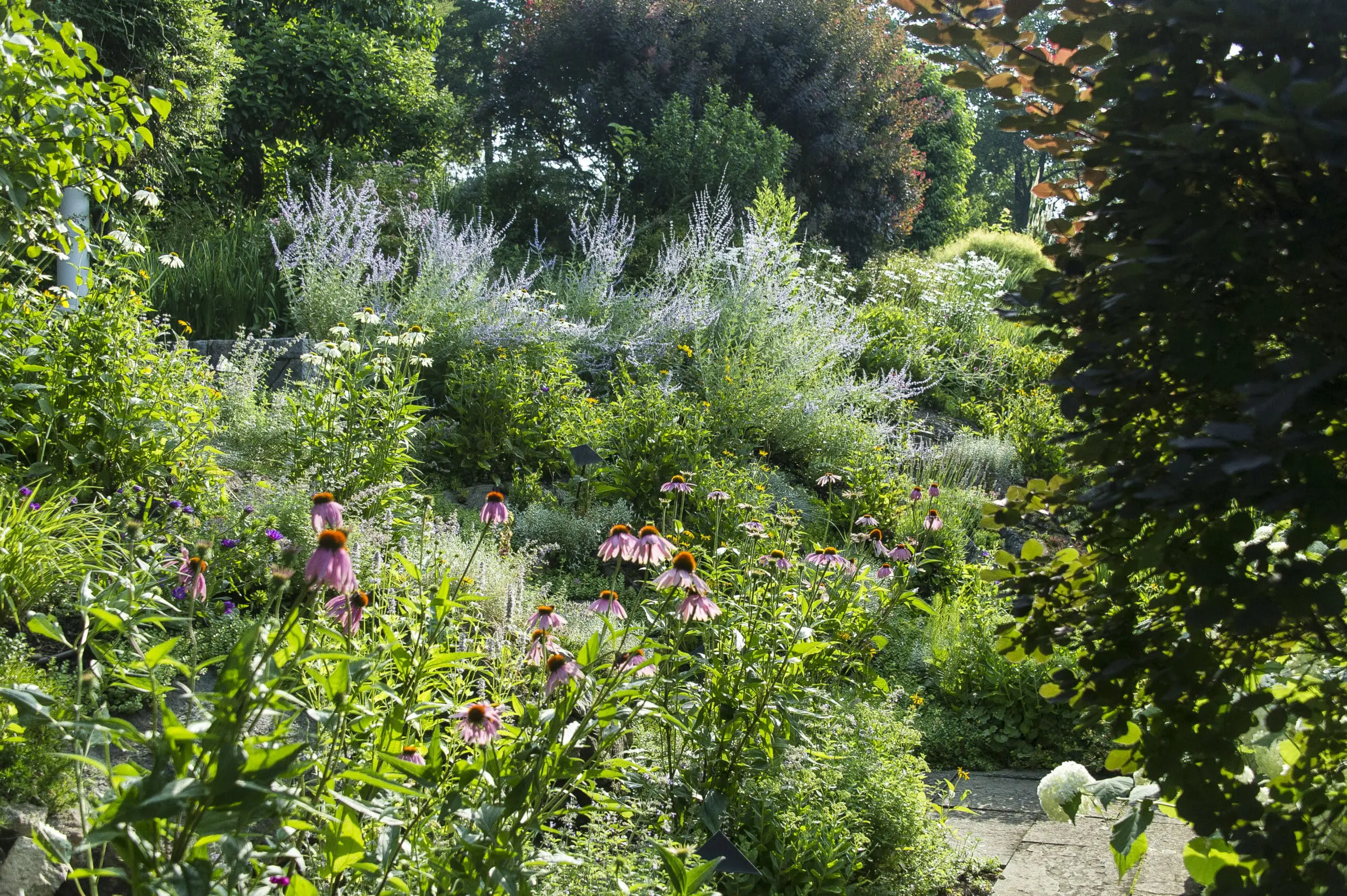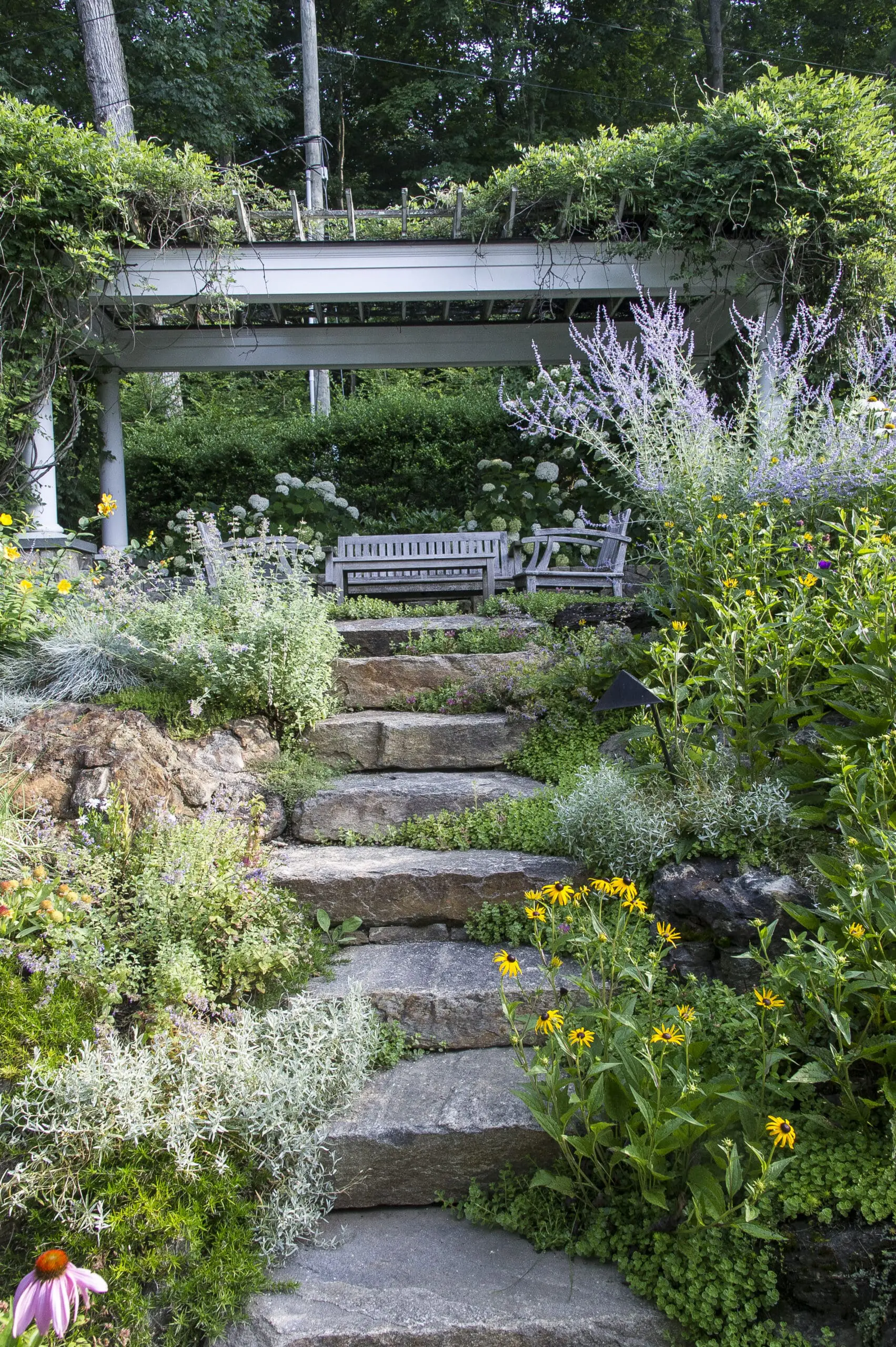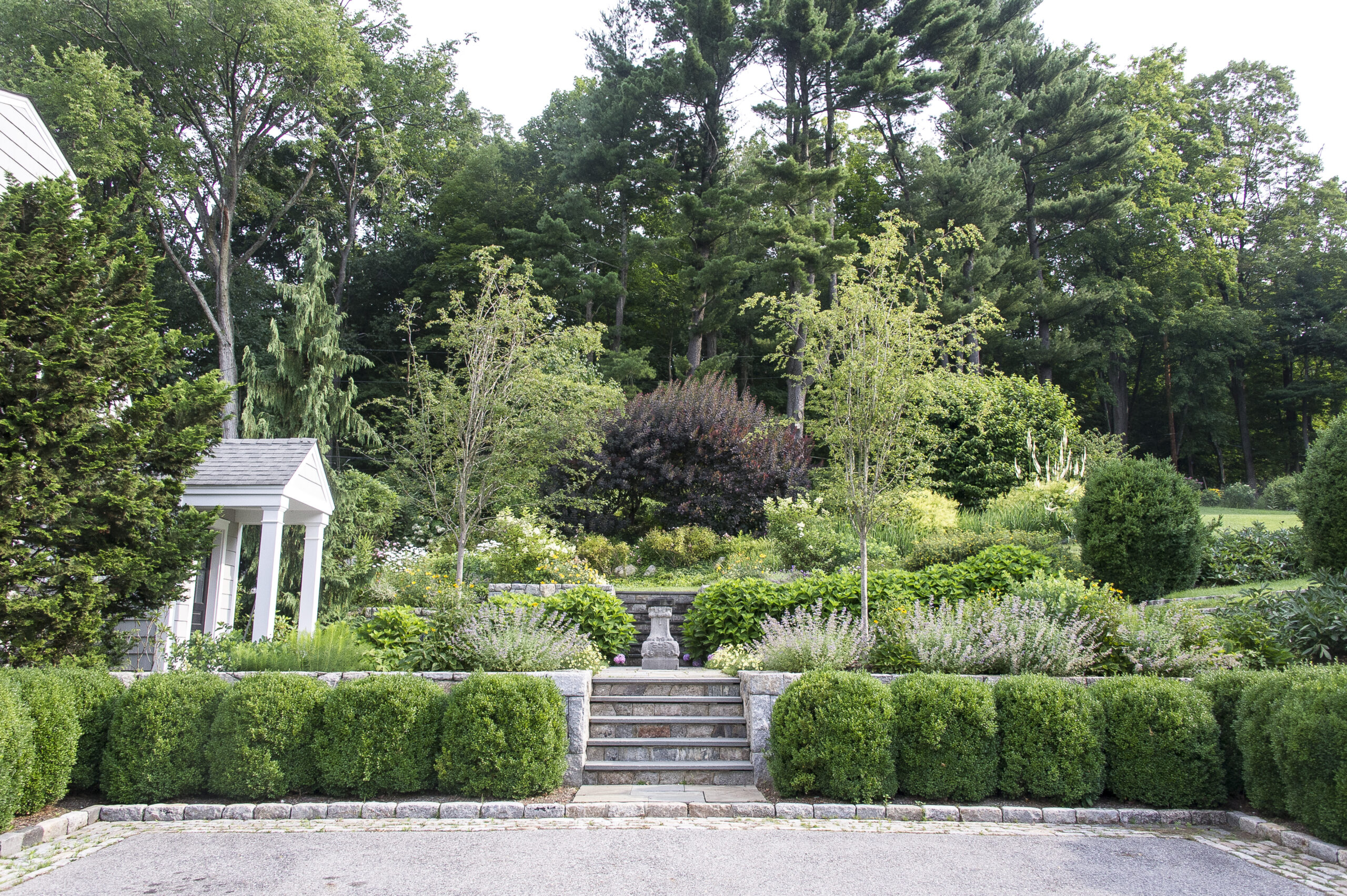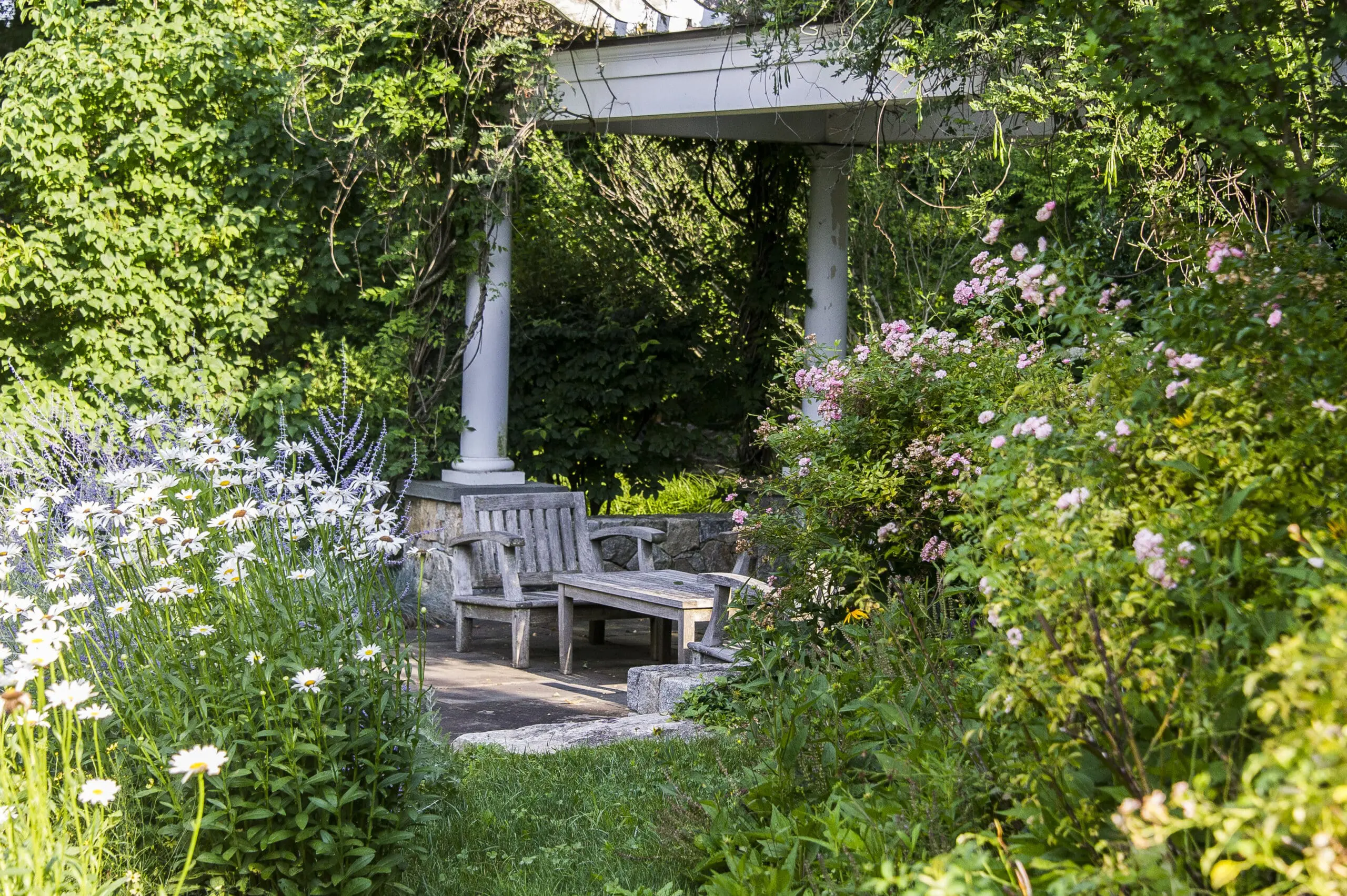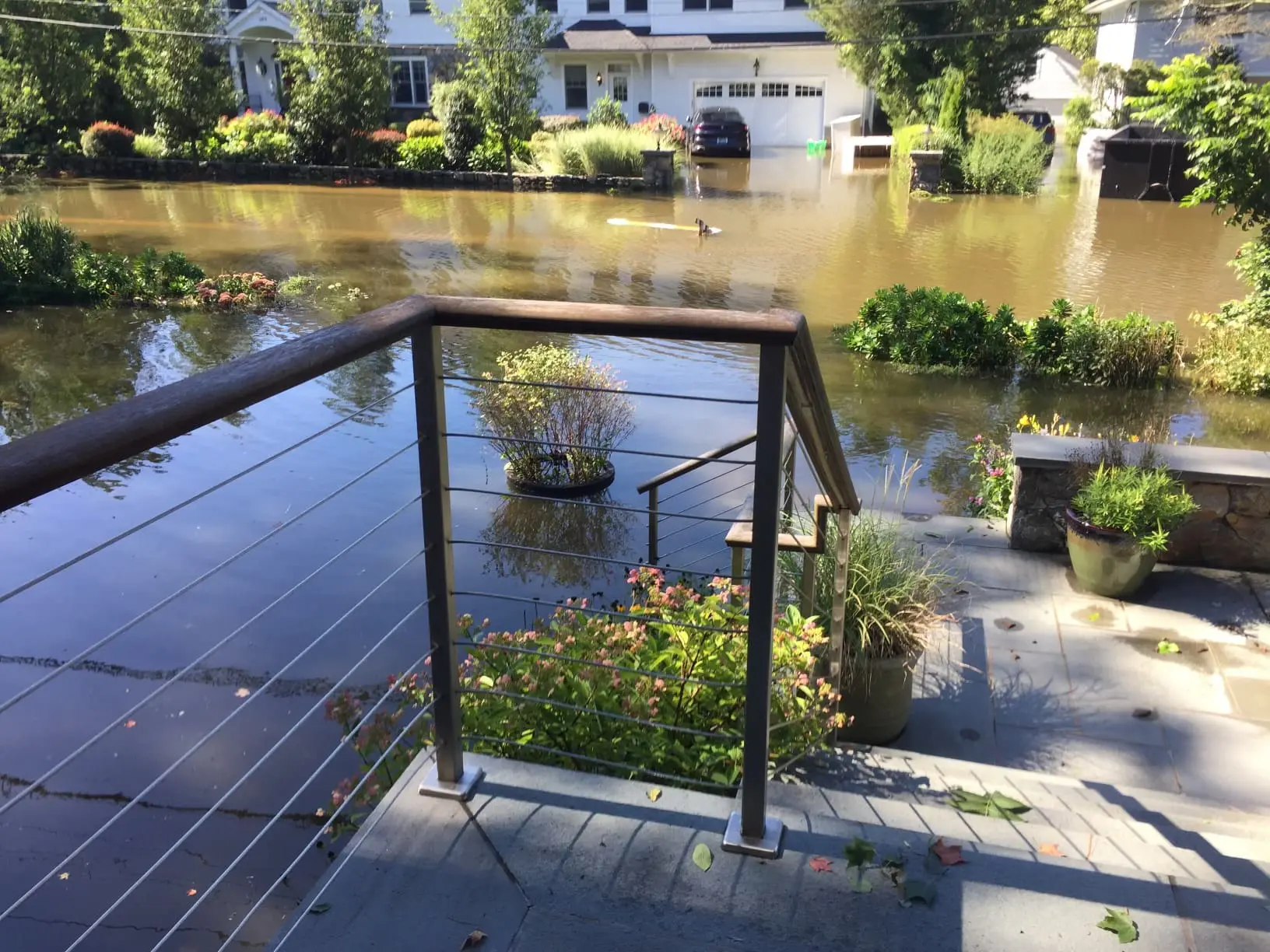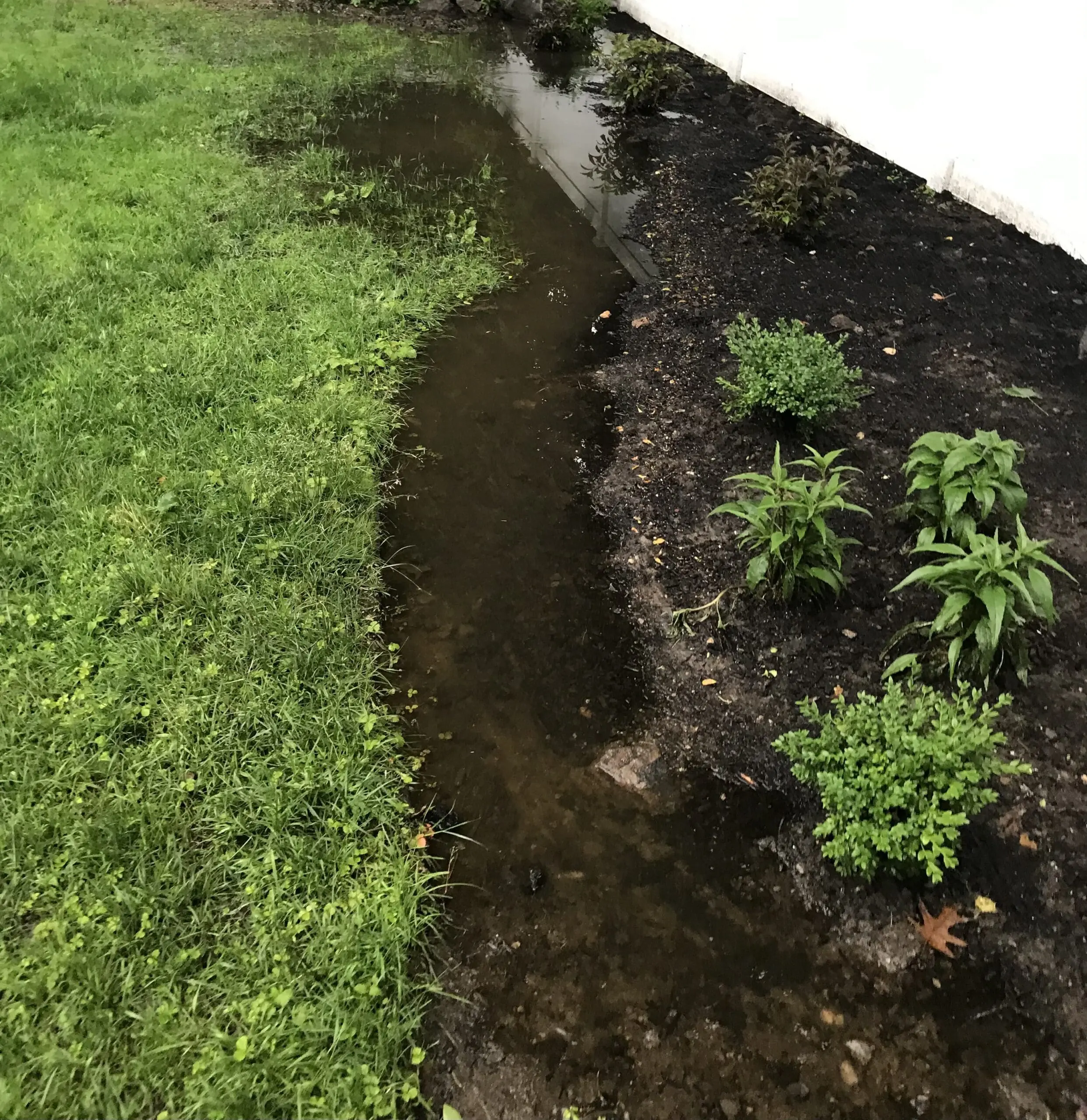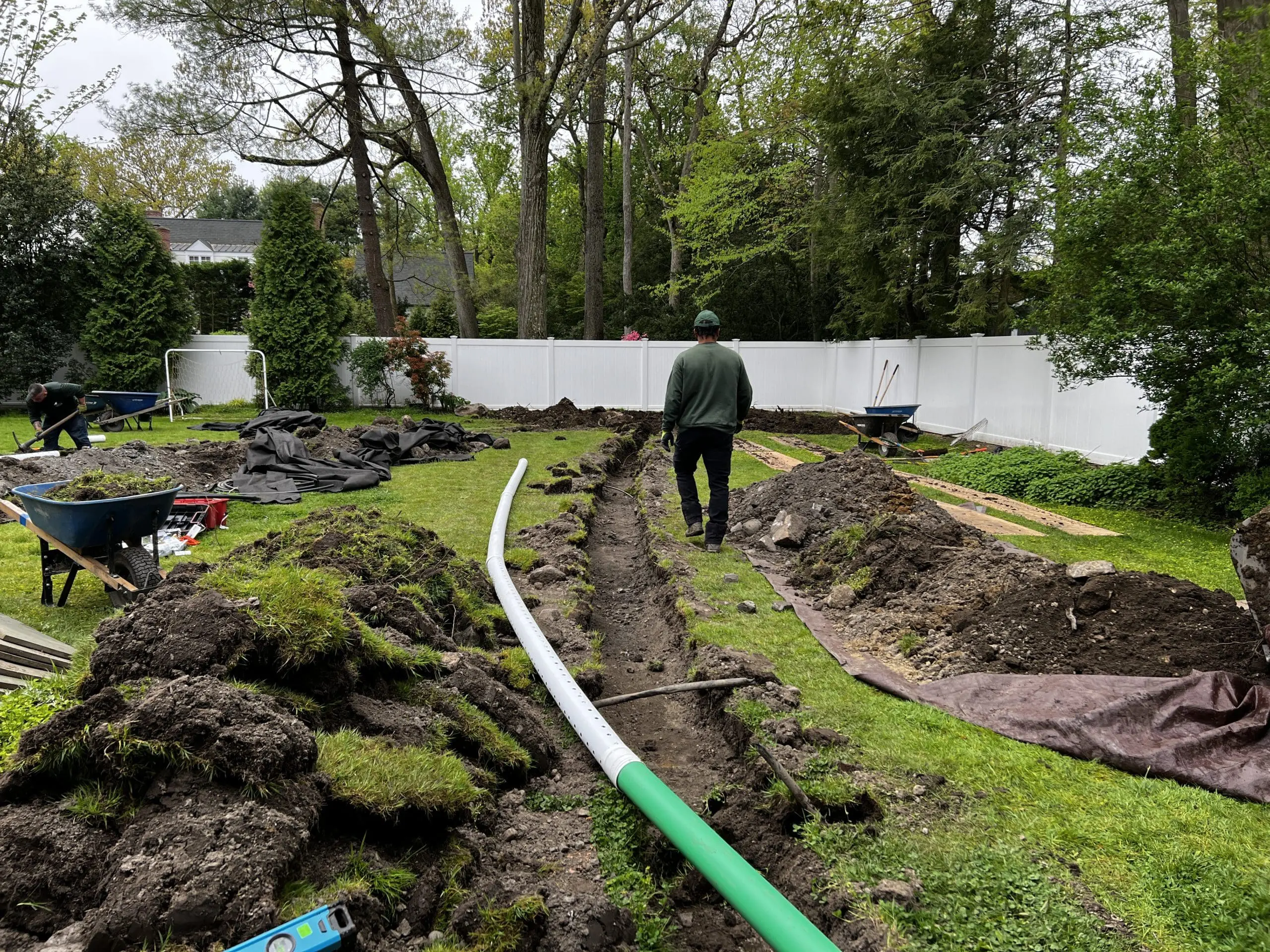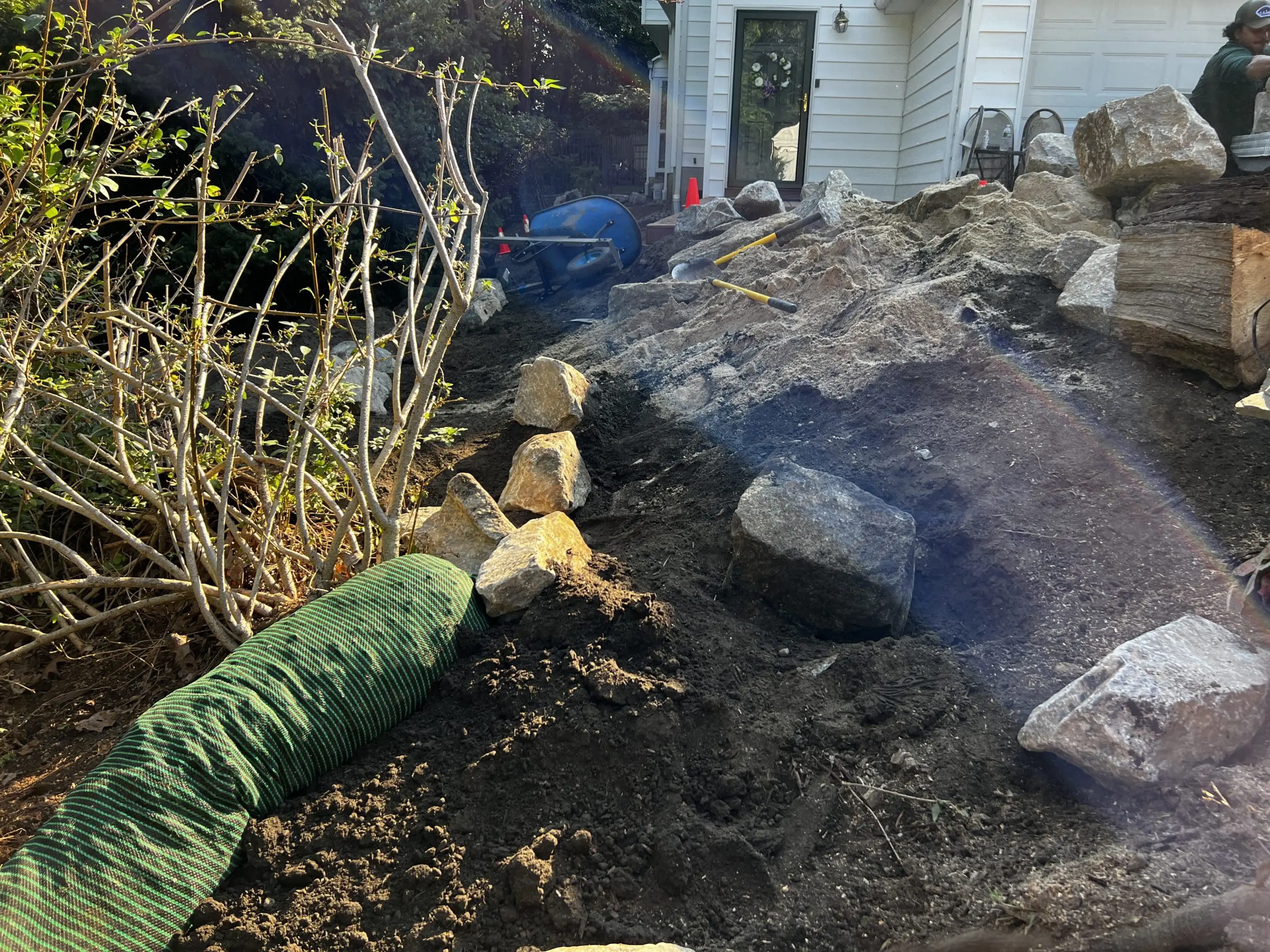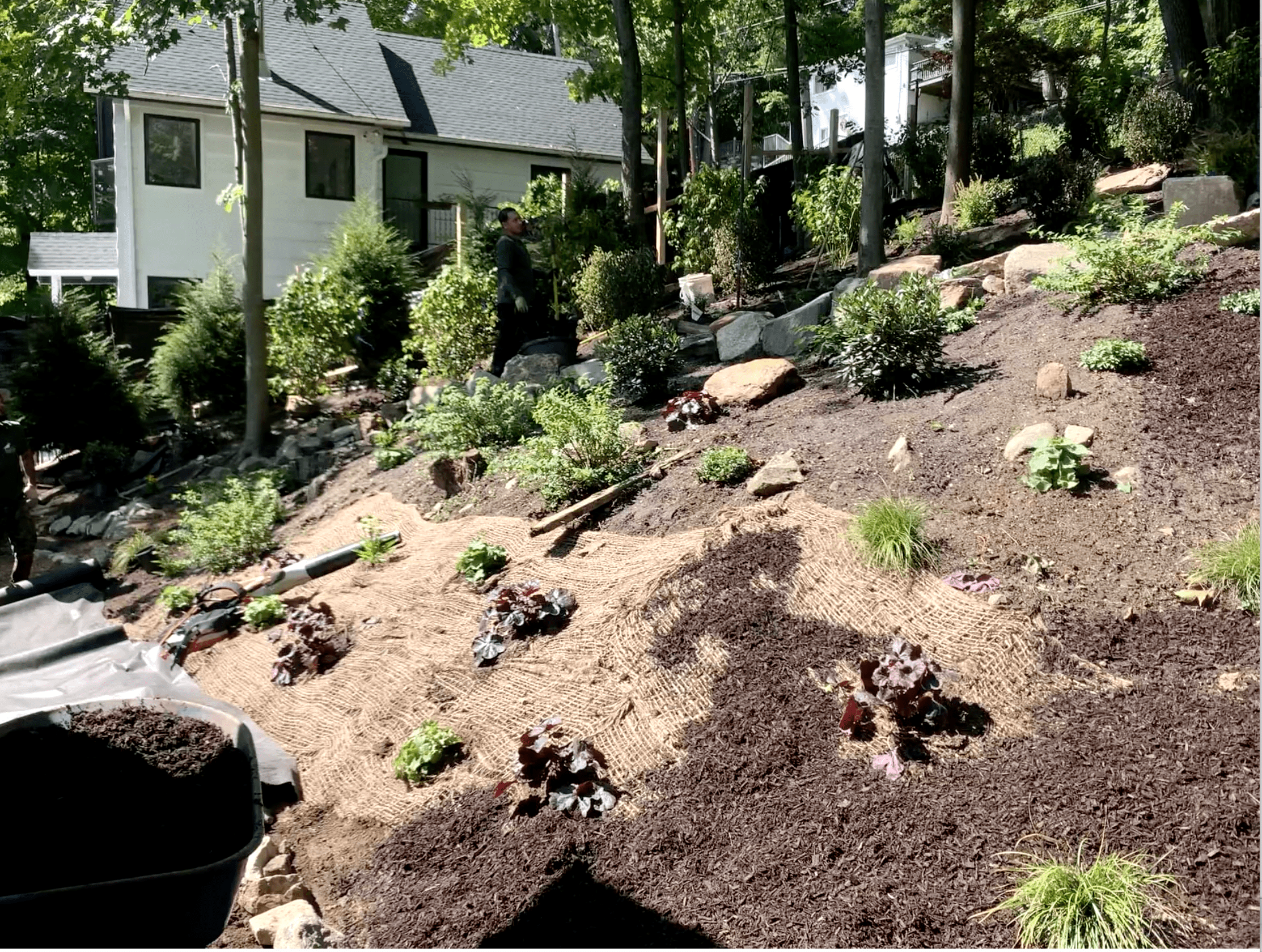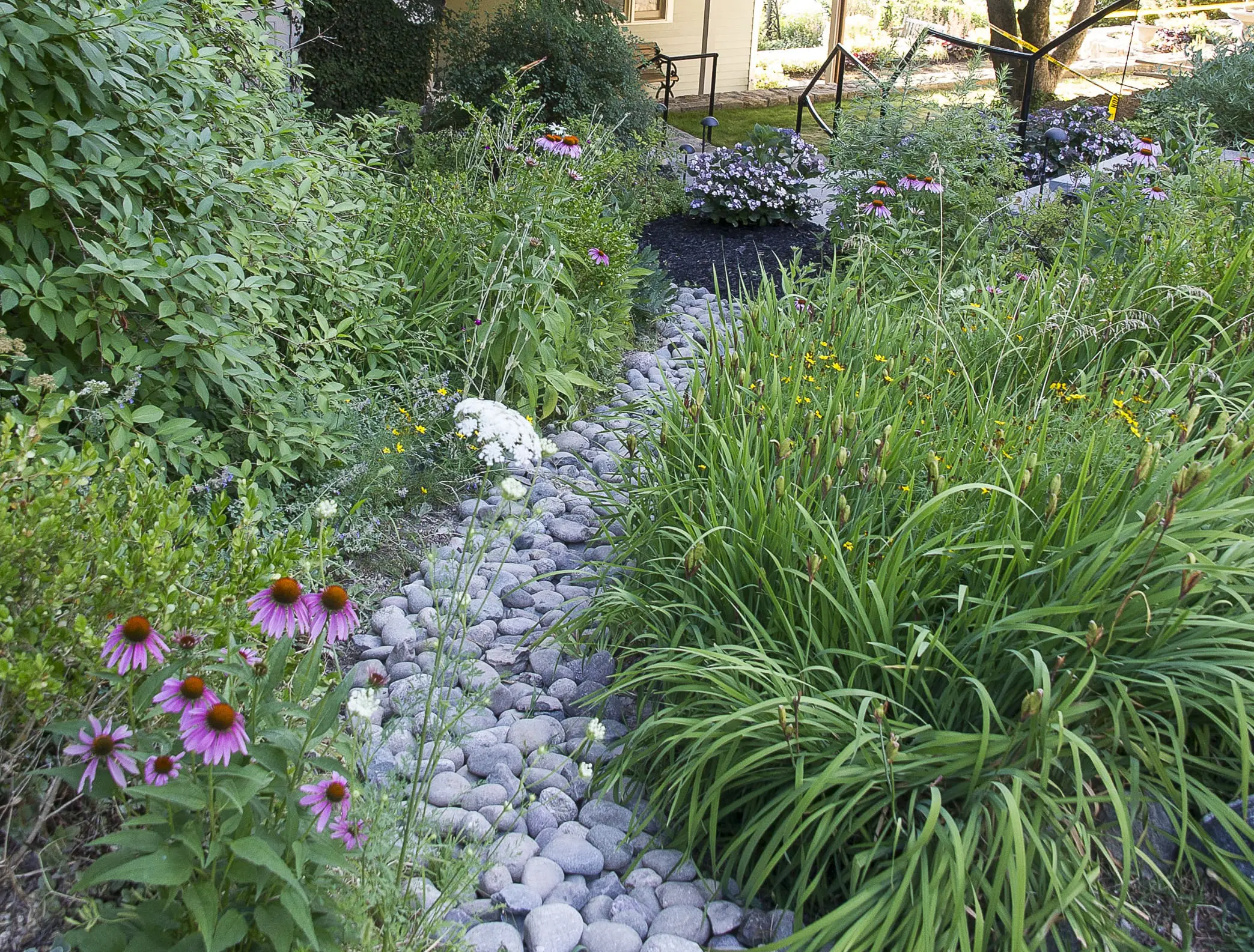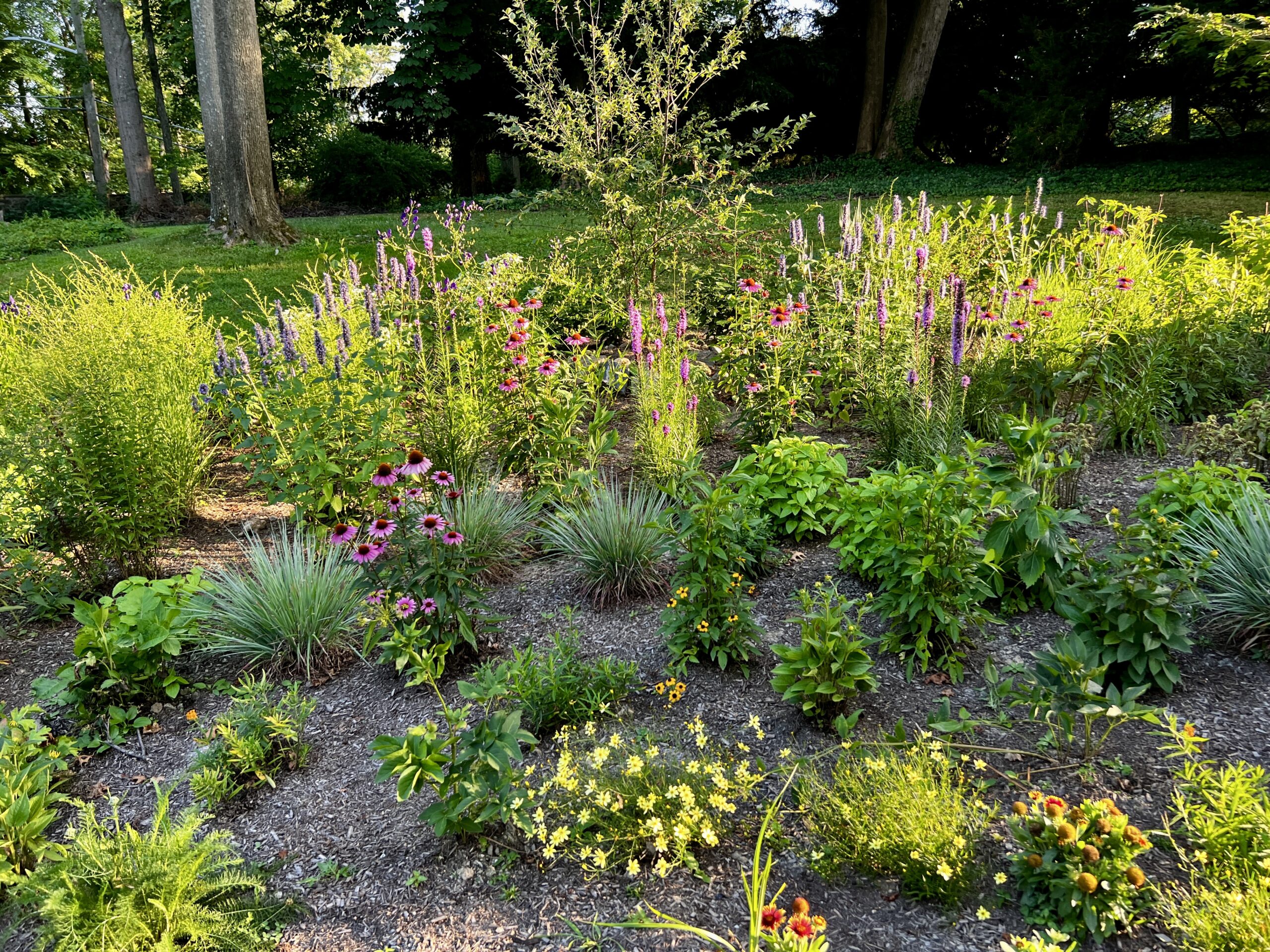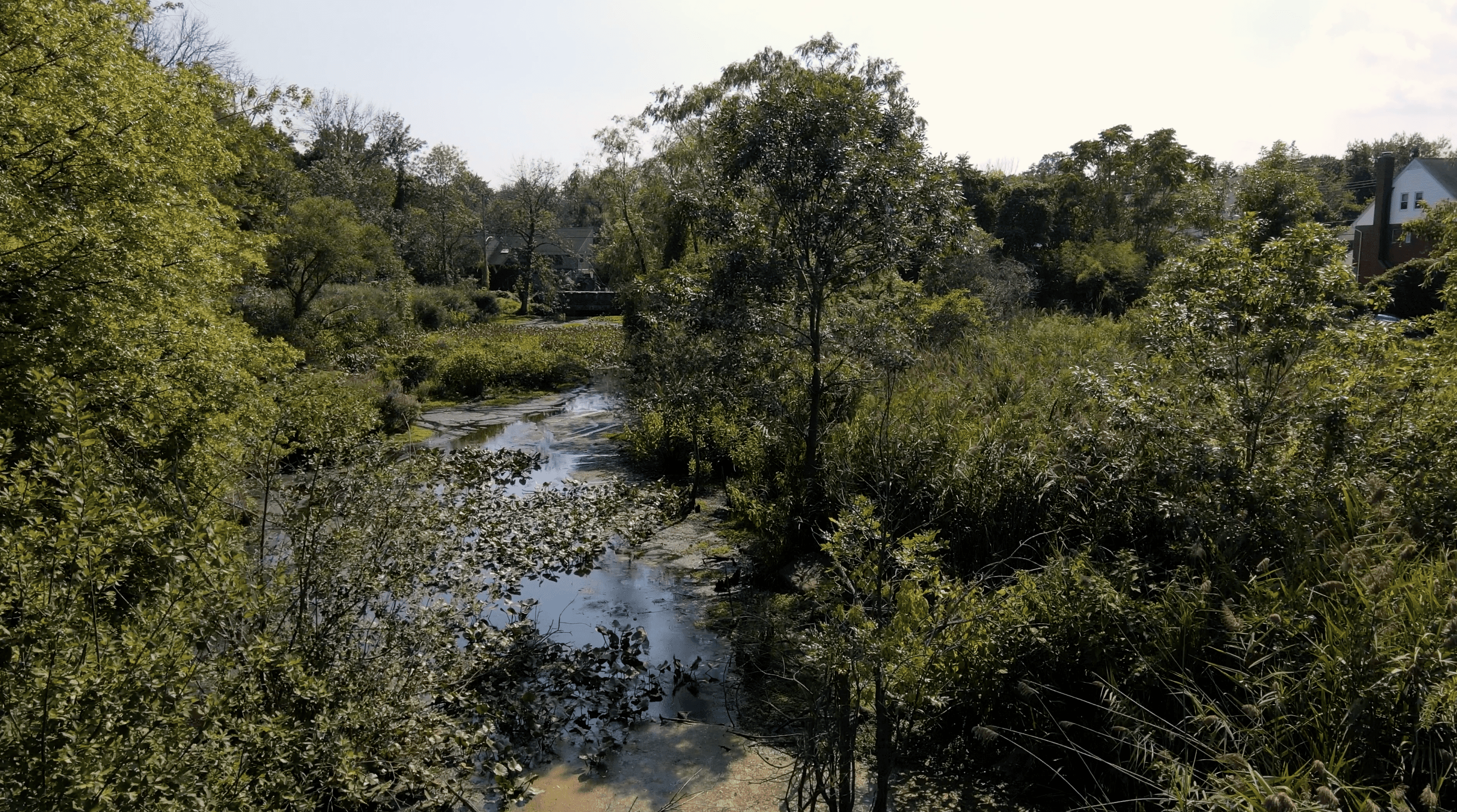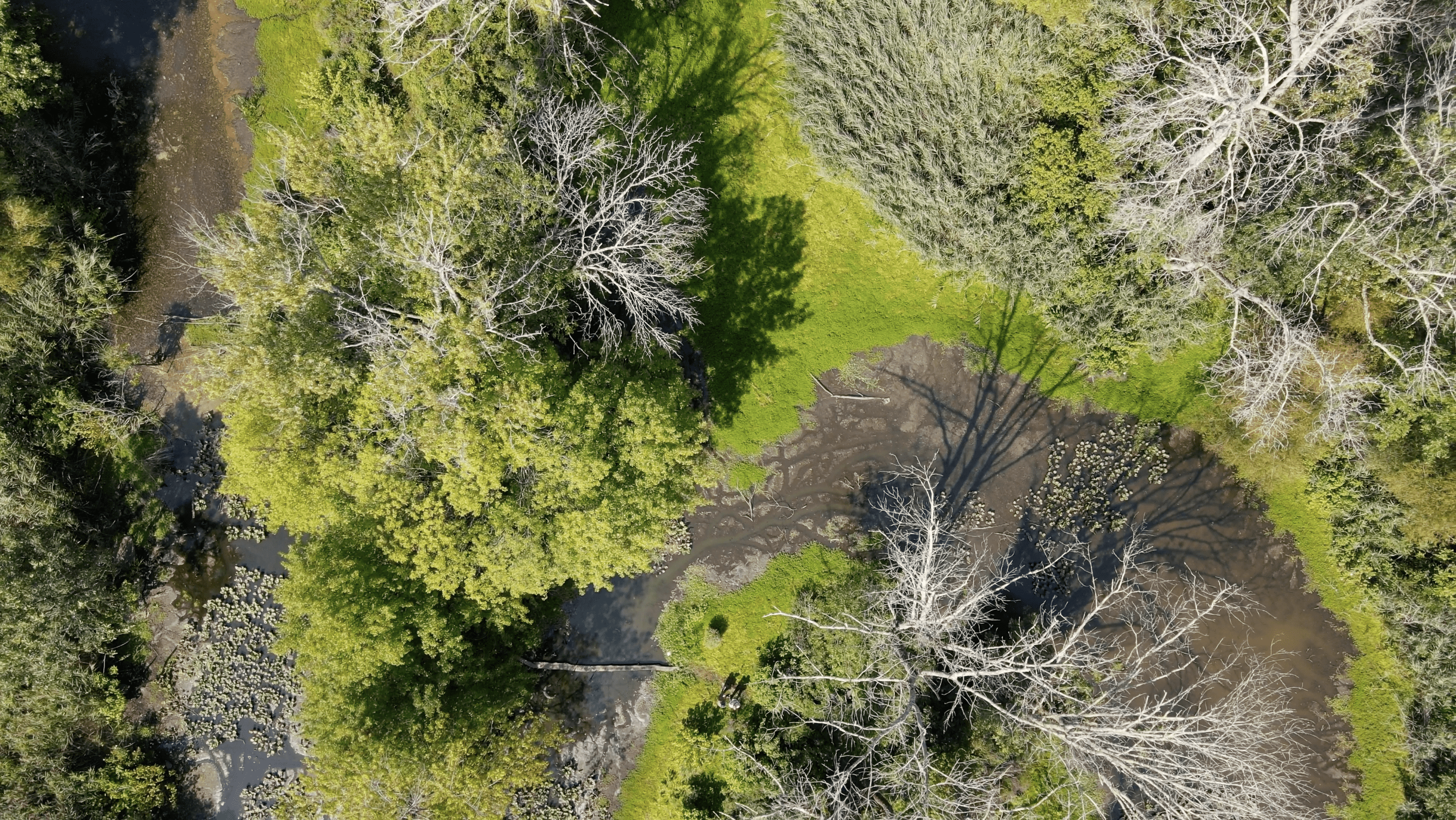The existing conditions at this Hastings, NY home (as with many in the area), consisted of a slope that gets steeper in the backyard, where much of the outdoor real estate is. The client has a young and growing family and wanted to expand their usable outdoor play space. They were also tired of the front foundation plantings and the front yard border garden featured some overgrown or struggling shrubs that made for an unattractive composition. GJLD stepped in to design a Landscape Design Master Plan that sought to create new spaces to recreate, gather and entertain while also improving circulation, drainage, and resilience of the property.
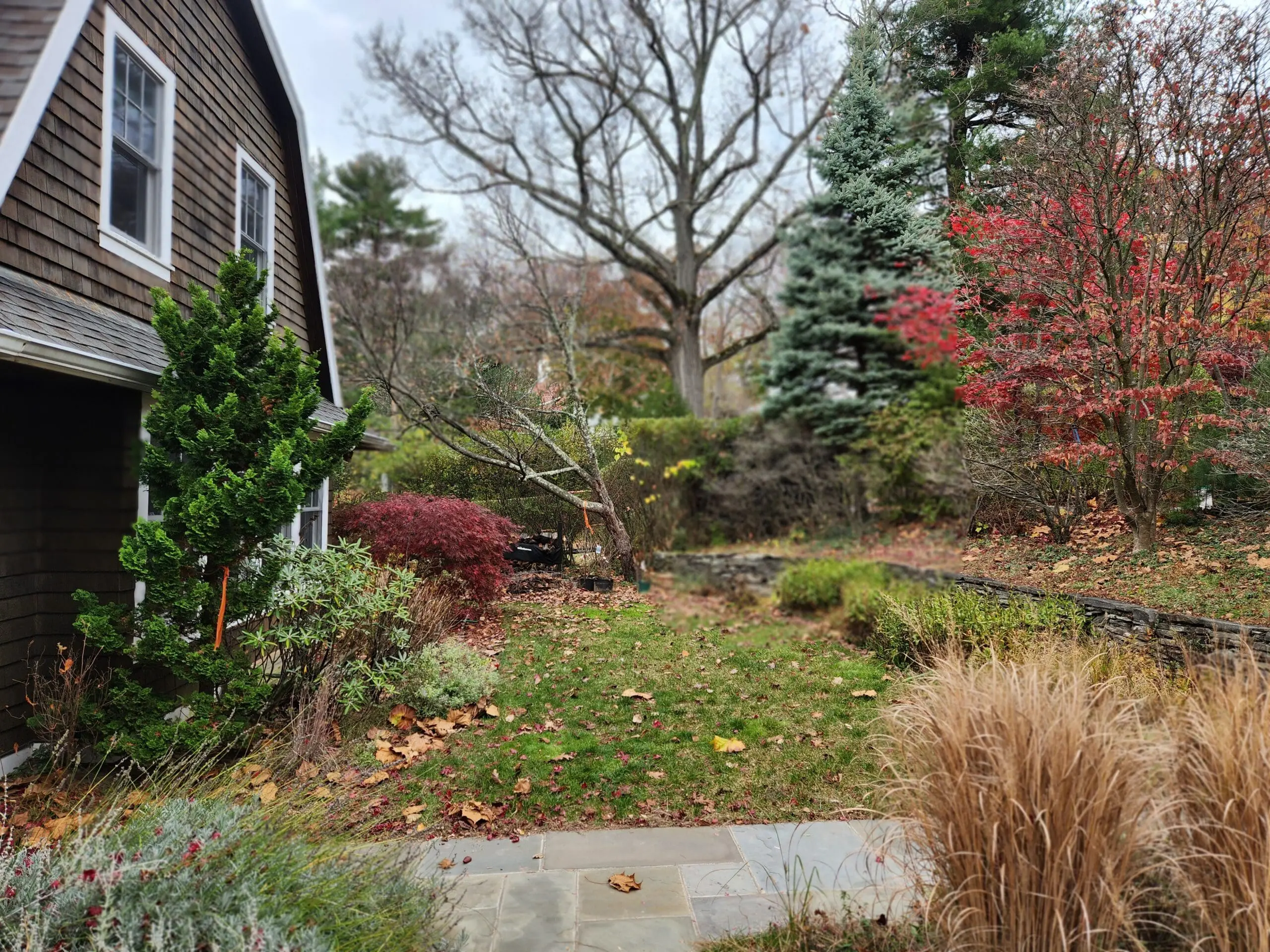
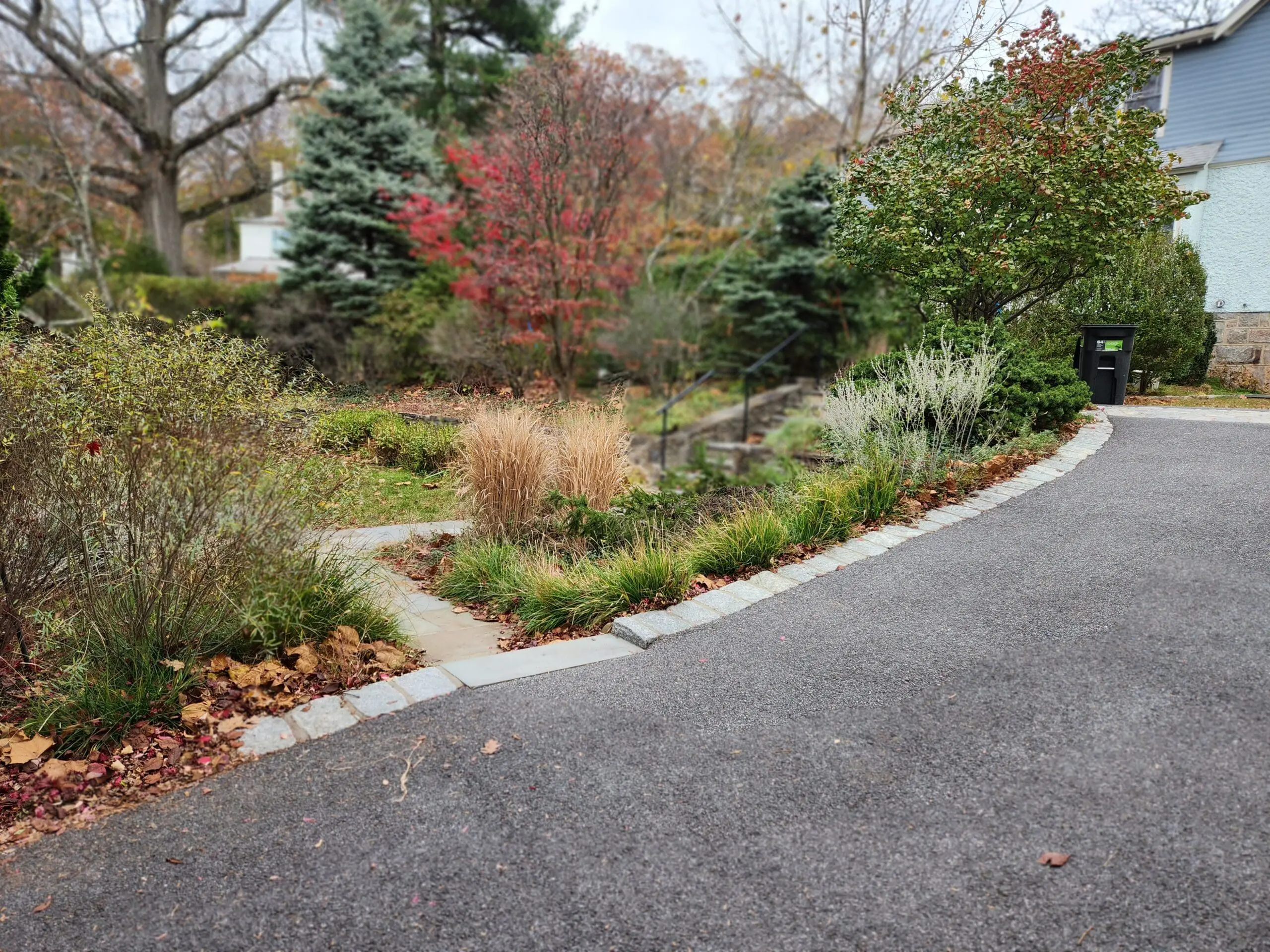
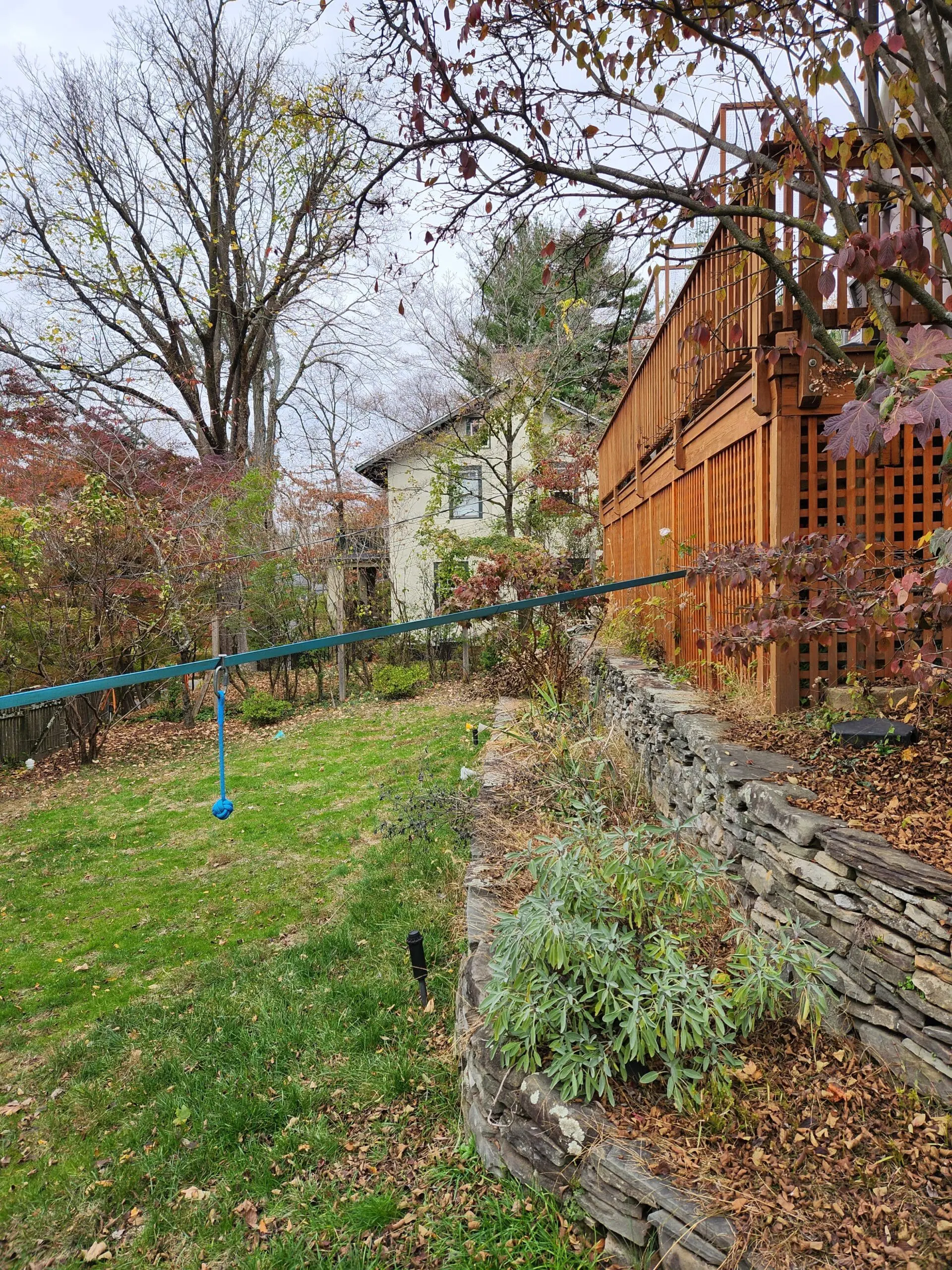
Landscape Grading and Drainage for a Level Backyard Lawn
Before grading the backyard with many yards of new topsoil, we needed to address landscape drainage. We crafted a type of tile drain by installing a perforated pipe with vertical infiltrator pipes connected perpendicularly. The whole contraption is wrapped like a burrito in filter fabric and back filled with gravel. We sited this across the backyard in the middle of the slope, allowing it to interrupt the flow of surface stormwater, transfer it through the vertical infiltrator pipes down to the lower perforated pipe, where it can release into the subsoil and groundwater.
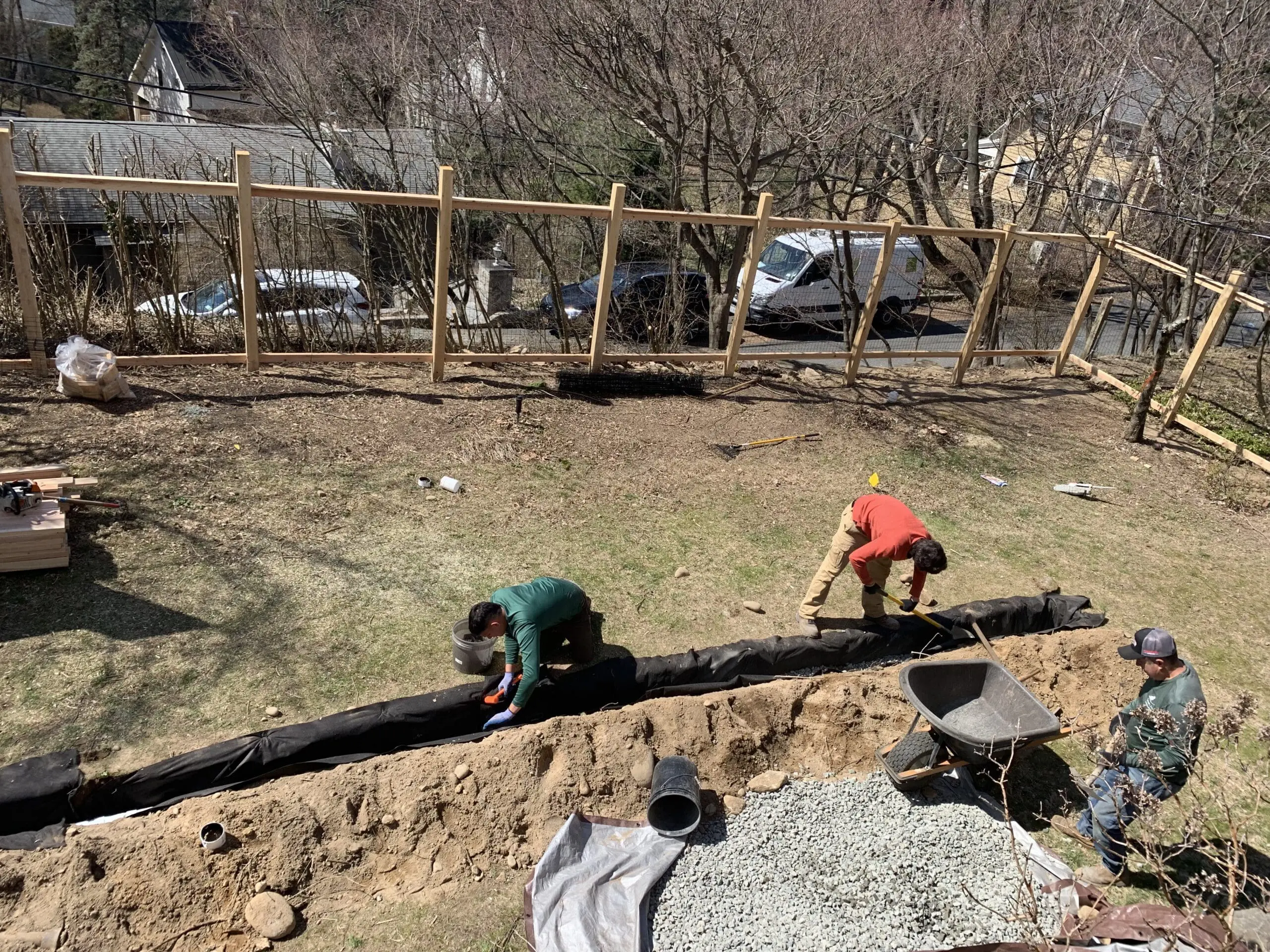
To level the backyard, we brought in fifty yards of topsoil and graded it to achieve a level surface for playing. We applied soil amendments to improve soil structure, nutrient content and sufficient water holding capacity, and drainage ability. The drainage system described above prevents the lawn area from pooling and holding excess stormwater on the surface.
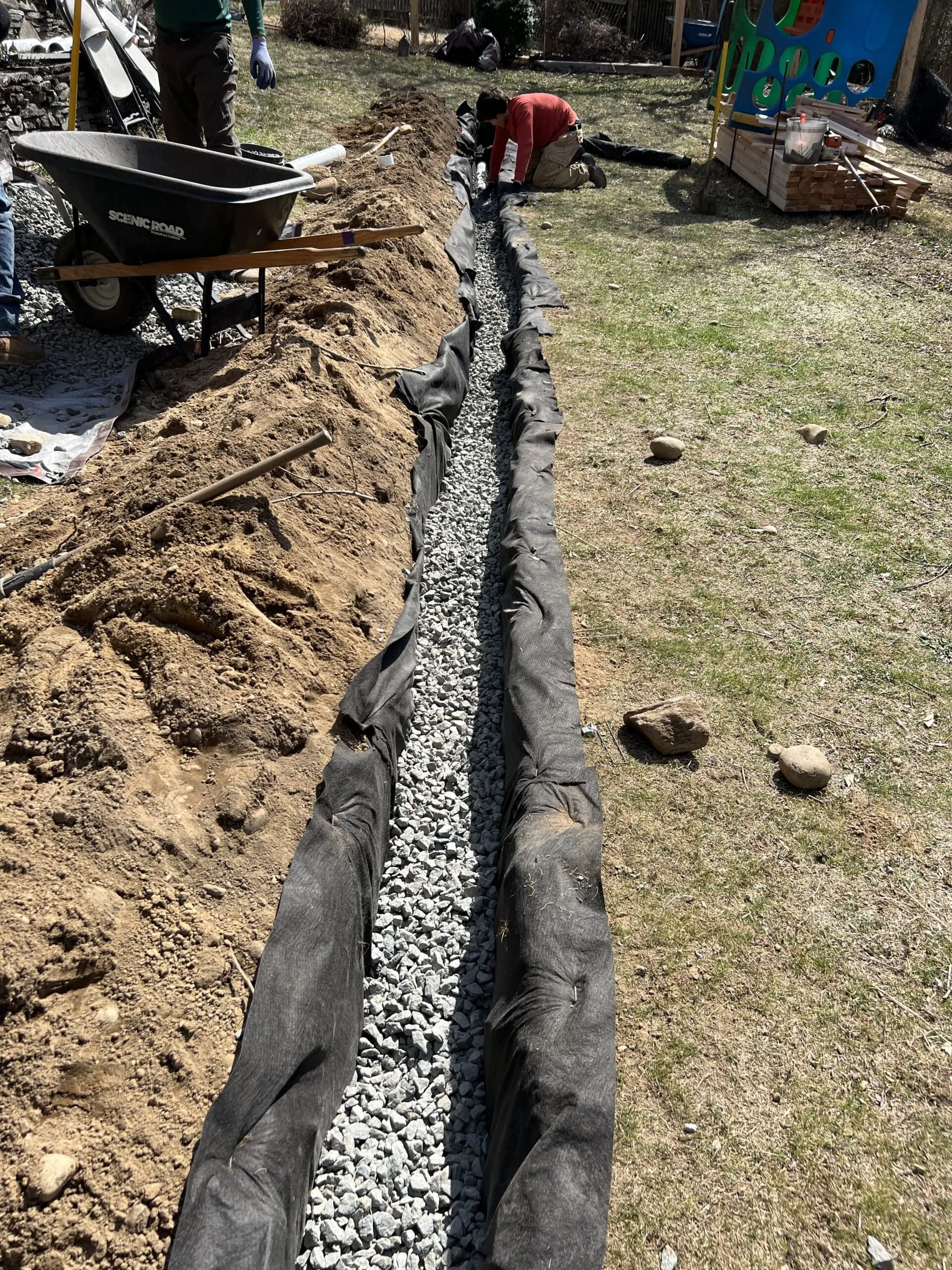
We then seeded the backyard play area with a low-mow eco-blend of over twelve varieties of grass seed. For an organic lawn installation, we find that having many varieties of seed creates a thick and resilient turf grass that out-crowds weeds and is not susceptible to widespread disease, unlike traditional monoculture lawns.
Site Development, Fencing, Steep Slope Management
We partnered with Salem Fence for a new fence along the backyard borders. Once again, Salem Fence constructed a beautiful fence in a timely manner. Timing the fence construction to be completed before we began the project was critical.

As part of the site development, we also removed a few dead trees, after receiving permission from the town of Hastings, New York, and indicating what approved native trees would replace them. There was an overgrown mass of privet at the edge of the backyard lawn area that we pruned (significantly) into an appropriately scaled hedge.
Beyond the privet, the property drops off onto a steep slope. While not a useable space, this slope faces the road and had become an eye sore. GJLD added more soil to the slope, to replace what had eroded away, and stabilized the hillside with wood water bars staked into the soil and boulders. We then seeded with a woodland wildflower mix and applied hay to secure the seed for germination.
Backyard Native Plant Garden
Finally, we established the backyard border bed (in front of the fence) and constructed two wood chip seating areas in either corner of the backyard. Groups of sitting boulders beneath two River Birch, surrounded by ferns and woodland perennials, make for cozy and immersive gathering places.
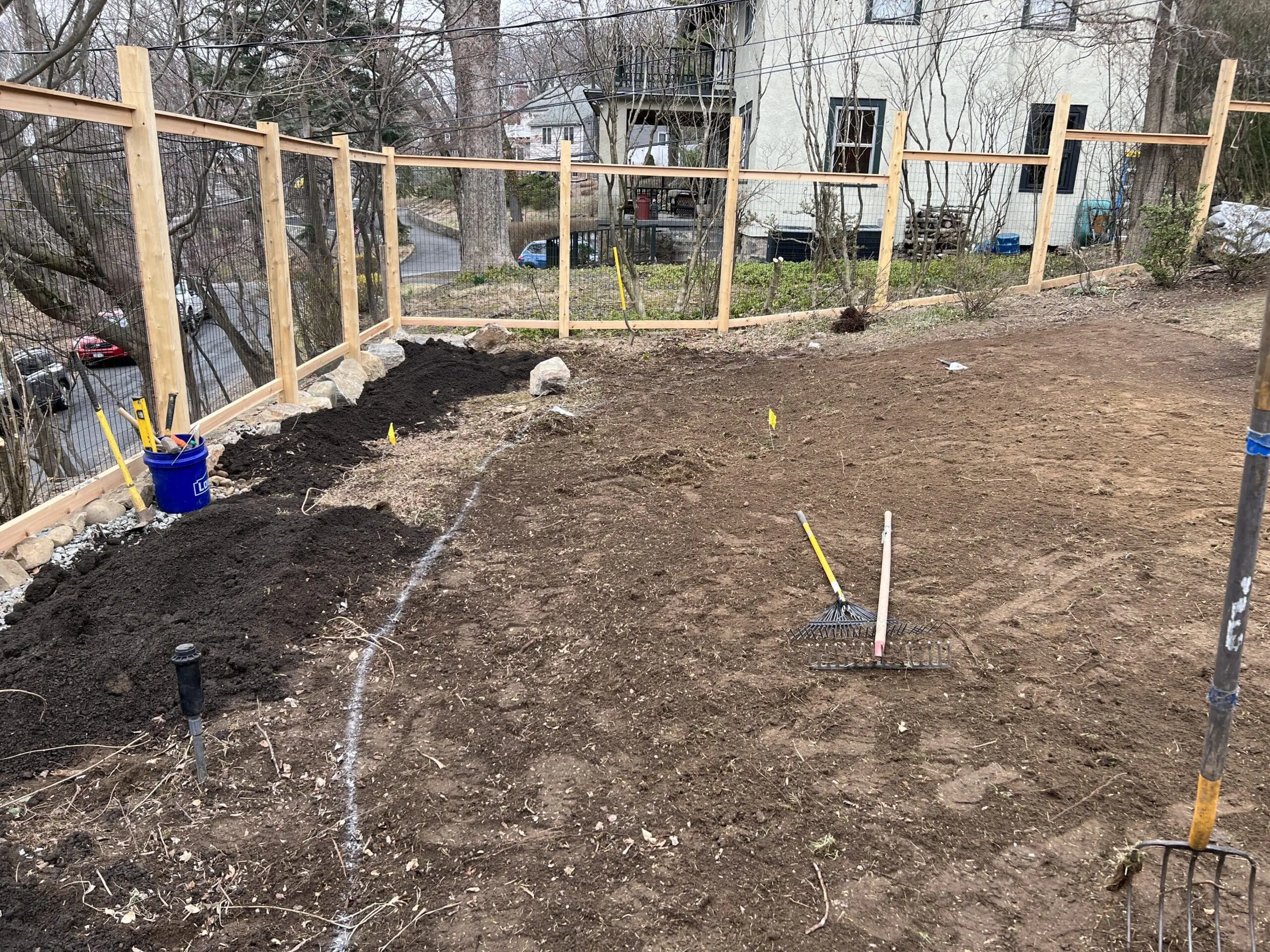

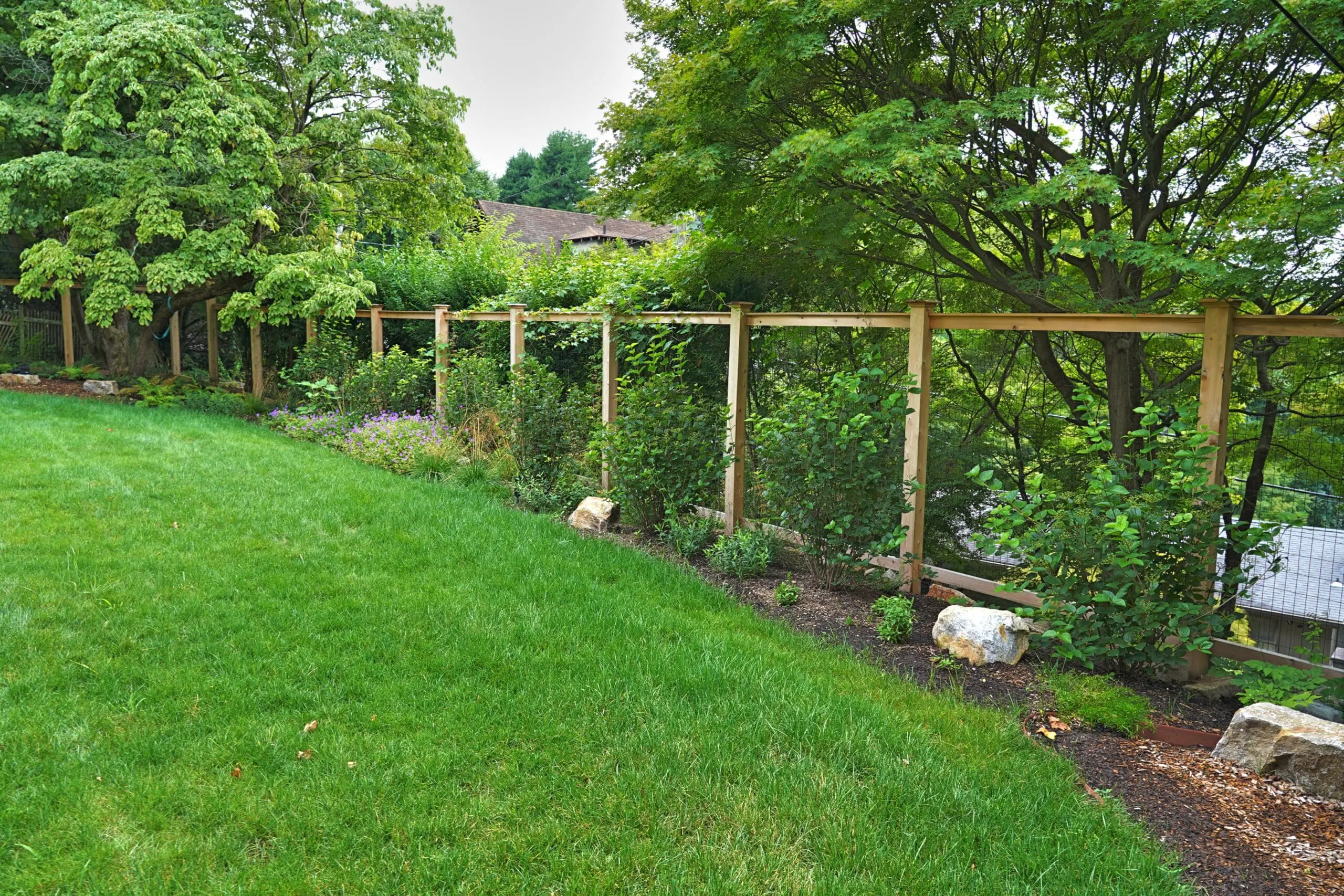
The raised deck had lattice paneling around it and two small garden terraces along the long side. From the new boulder seating areas, this zone was now a focal point and required a new planting. We planted vines to grow up the lattice and designed a combination of perennials and grasses for the terraces.
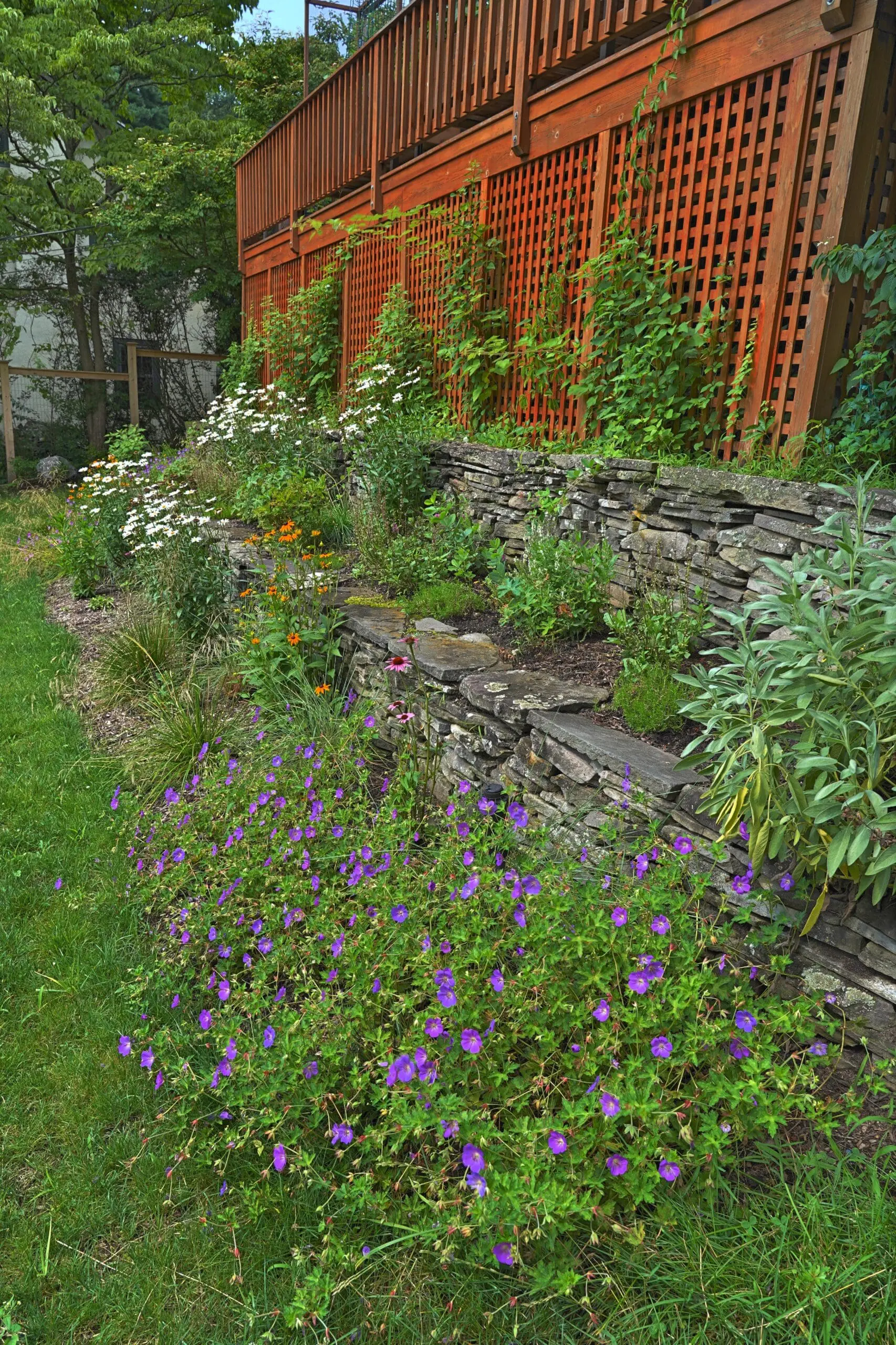
Natural Stone Masonry
To navigate the steep elevation change from front yard to backyard, we knew we had to add pathways and stairs. On one side of the house, our master mason, Aztlan, crafted a bluestone staircase with boulder accents. The top of the stairs meets the entrance to the deck area, effectively connecting both backyard rooms. On the other side of the house, a steppingstone path with a few steps navigates through a shady fern glen. Now one can easily travel from the backyard to the front yard via either side of the house.
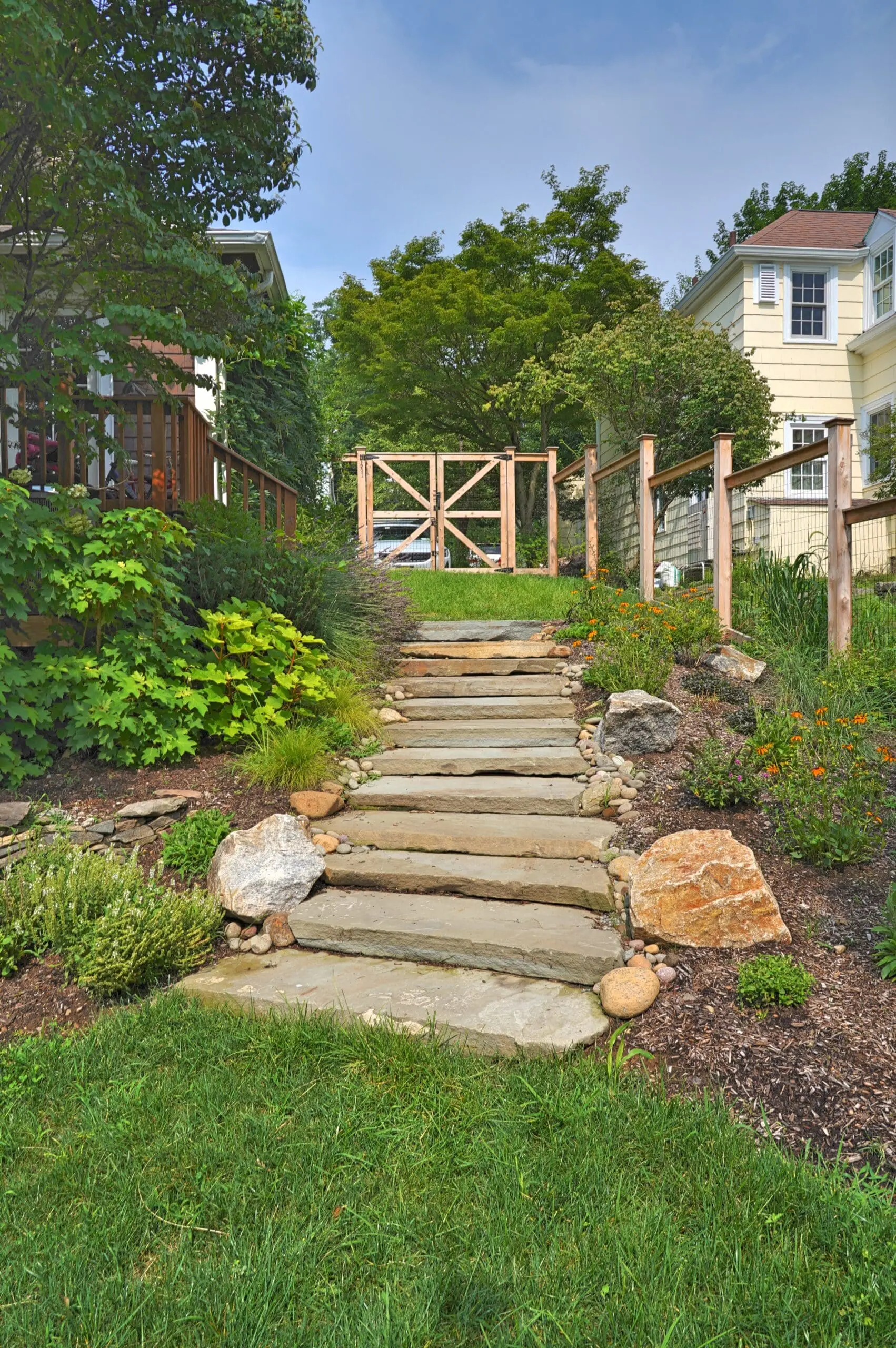
Front Entry and Front Foundation Renovation
The client had some existing planting along the front foundation and driveway, but they found it chaotic and busy, not joyful and interesting. There were also many dead or dying shrubs along their front slope that were not effectively screening the road or offering visual interest.
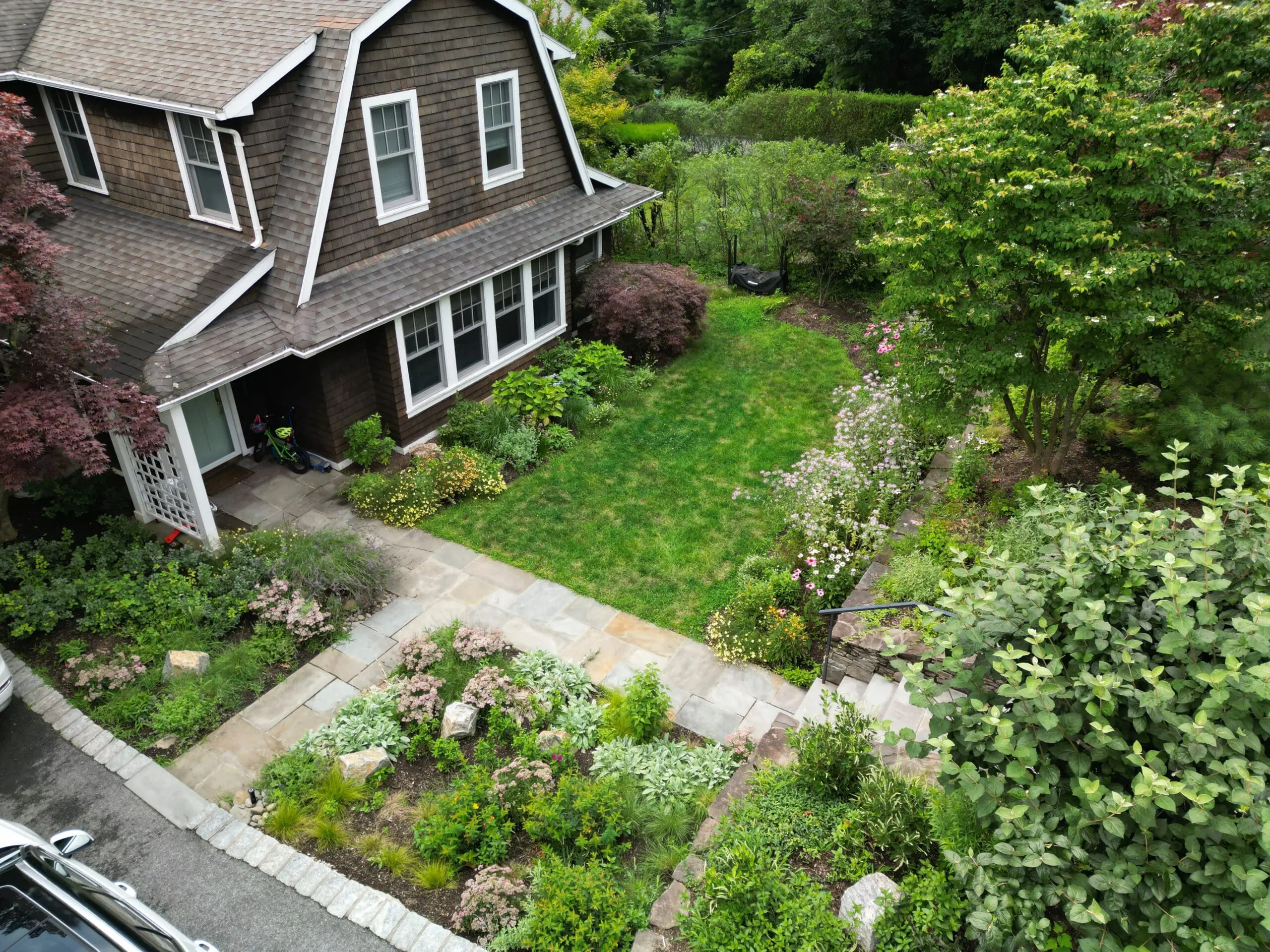
We sought to find a balance while designing between consistent, predictable plants (the matrix layer) and unique “vignette” combinations to add seasonal color and drama. These vignettes also allow for greater biodiversity and thus greater support of wildlife and beneficial insects.
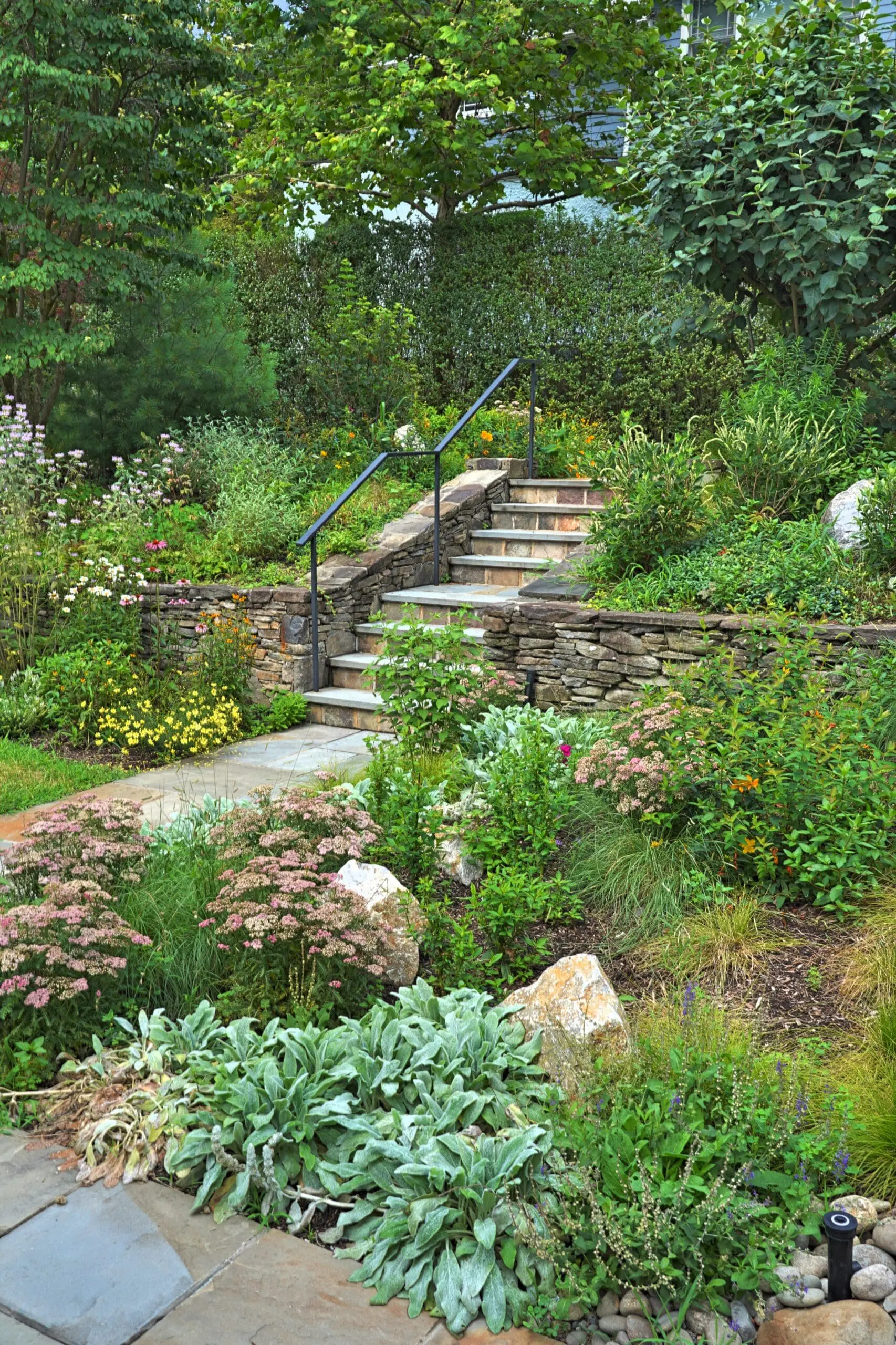
Boulder accents look lovely between the textures of prairie dropseed, lamb’s ear, and yarrow. On the slope, we replaced the dying shrubs with viburnums and dogwoods – two of the best native shrubs to support birds!

Growing Up with Nature
The client is thrilled to have a new landscape for their family to learn, play and grow in. In the words of the client – We are incredibly grateful to the Green Jay team for our absolutely stunning landscape. The design and execution not only created a wonderful and healthy space, but also inspired our kids to be interested in cultivating a native and organic environment.
Contact us to start your landscape design project!

